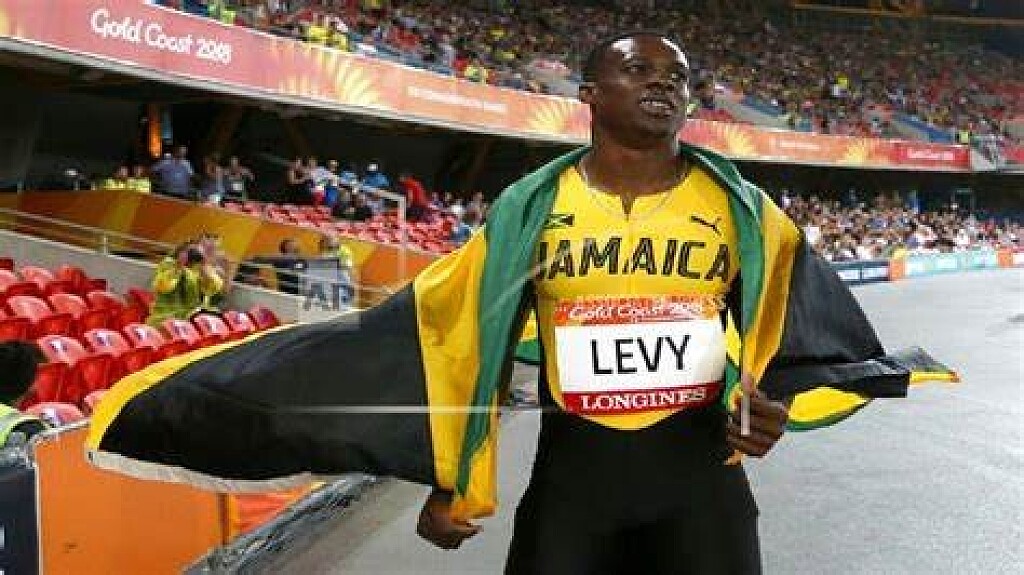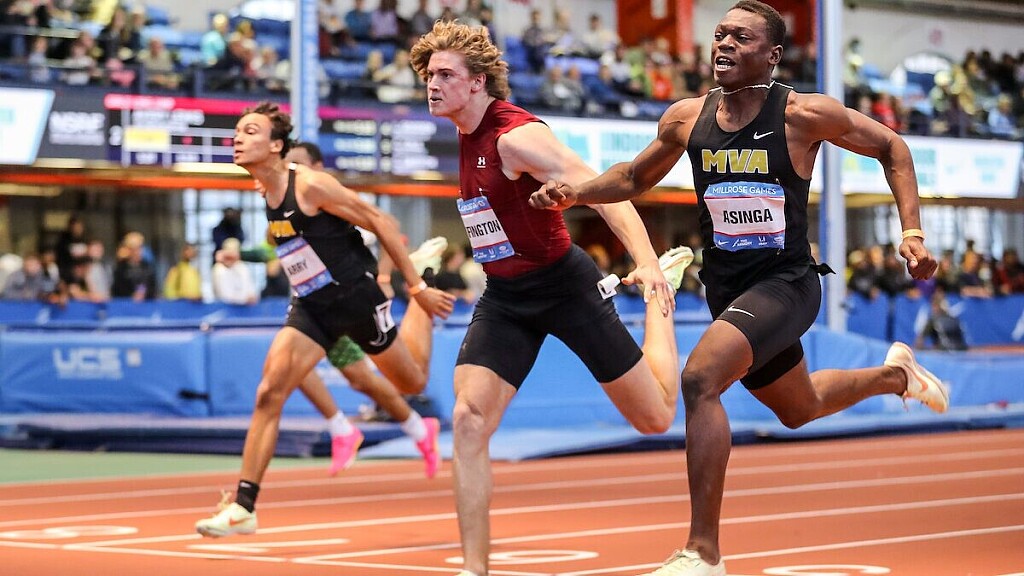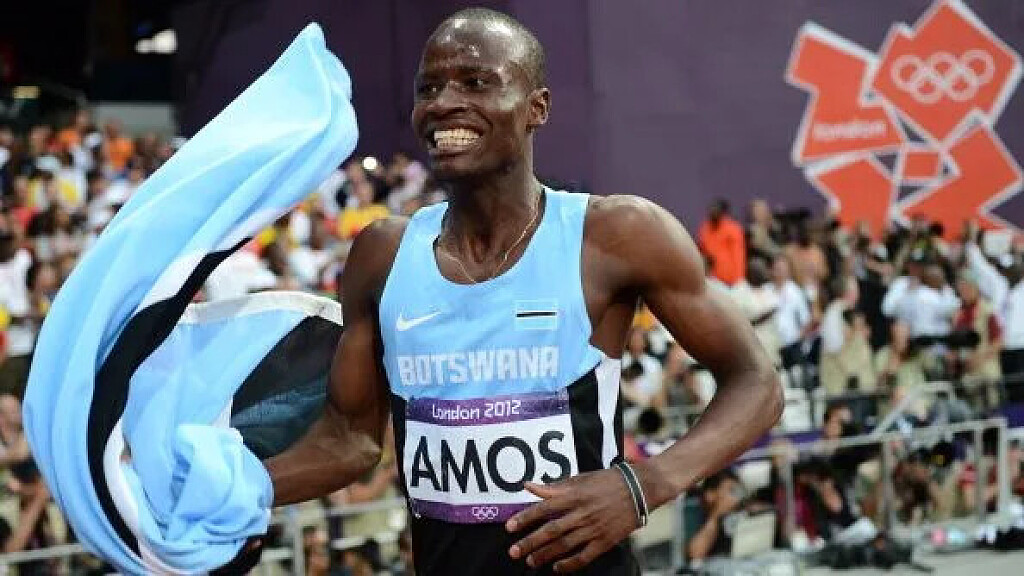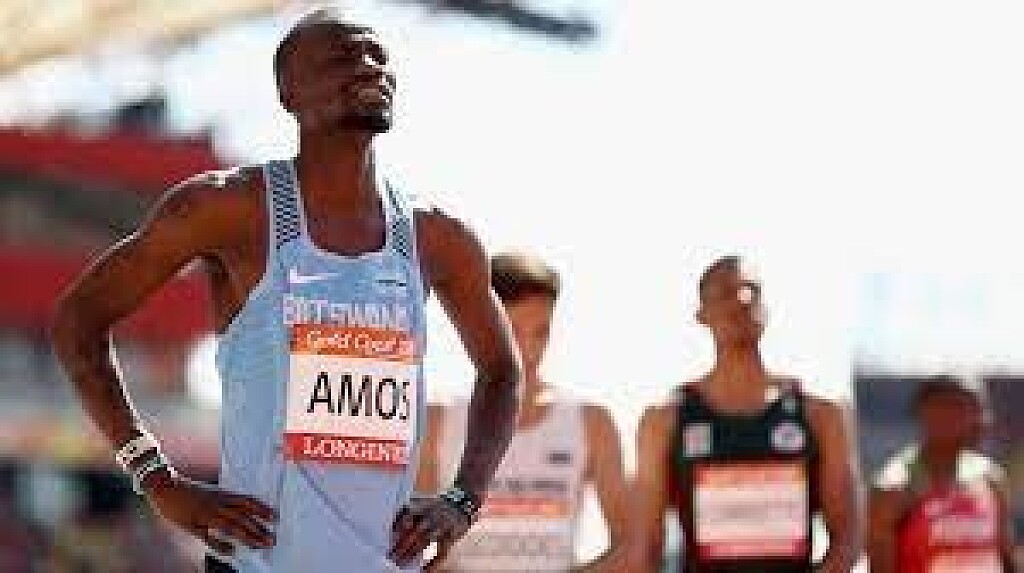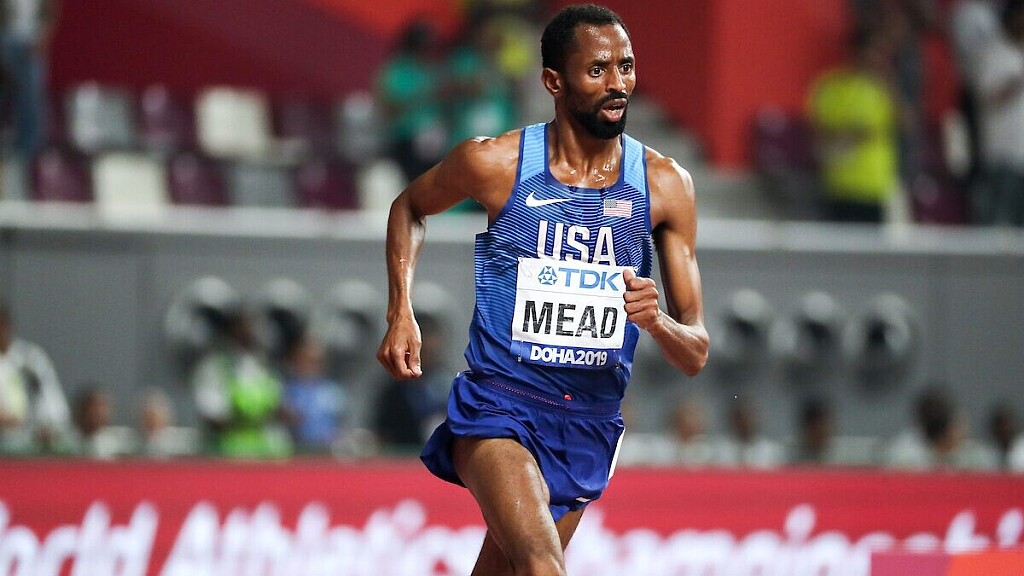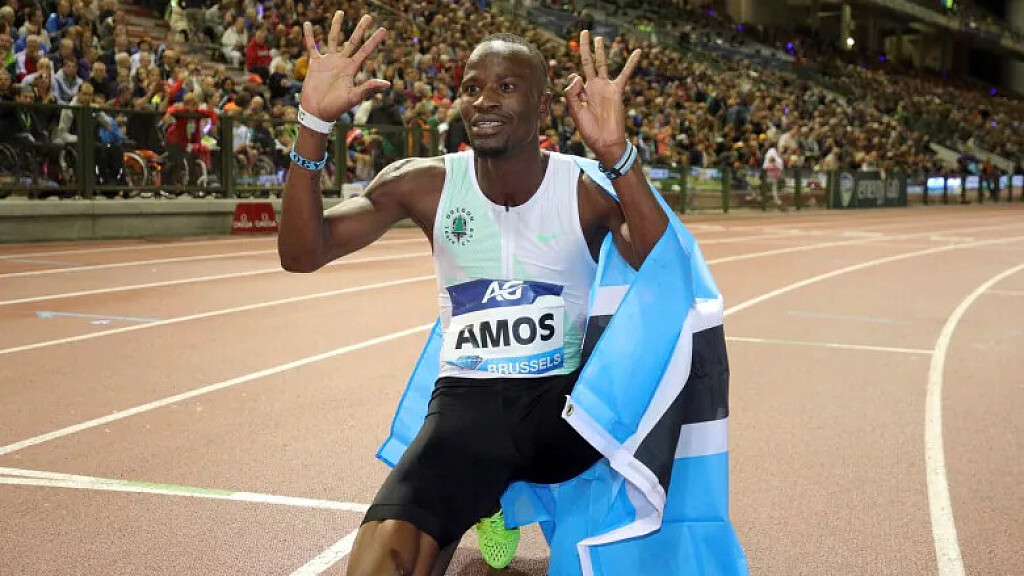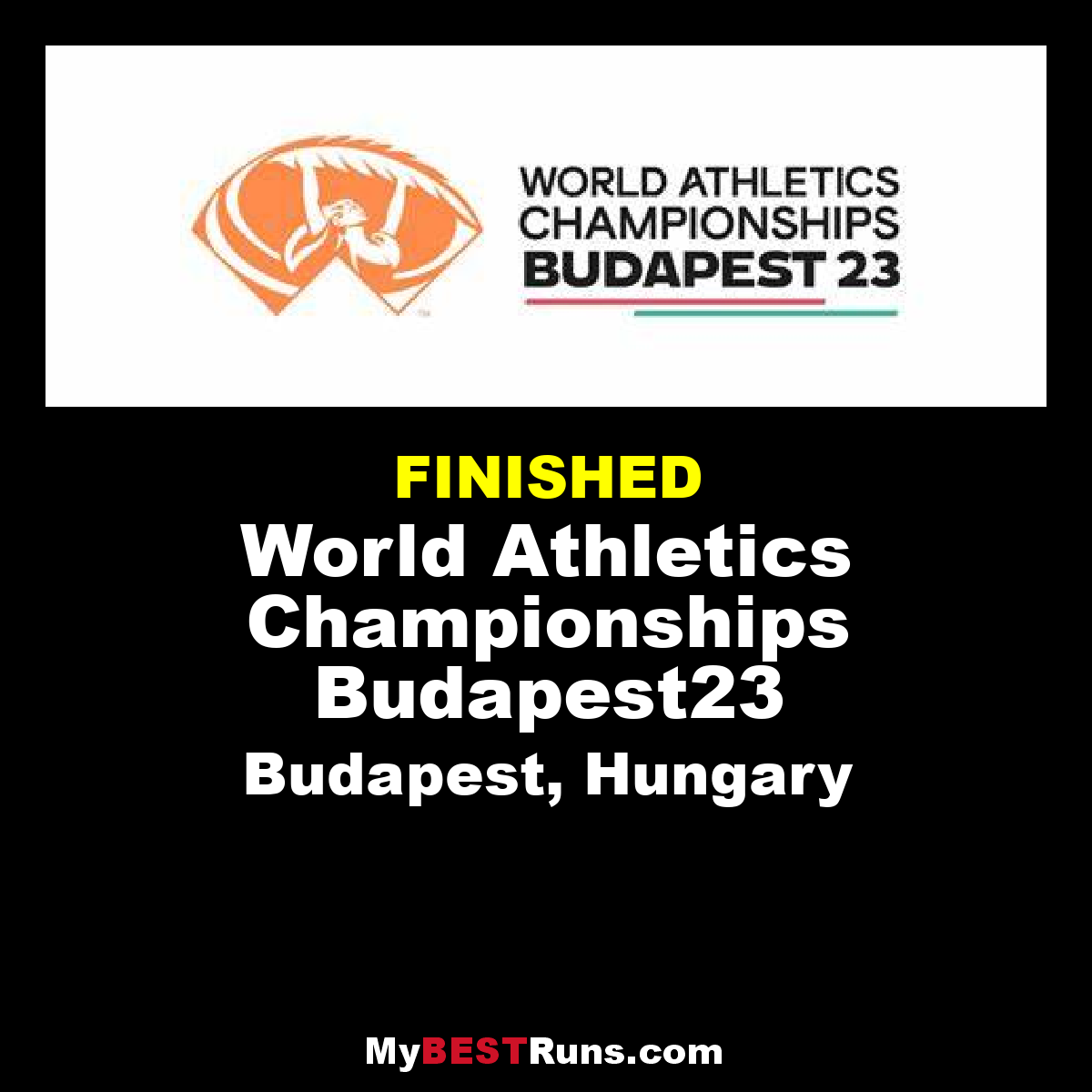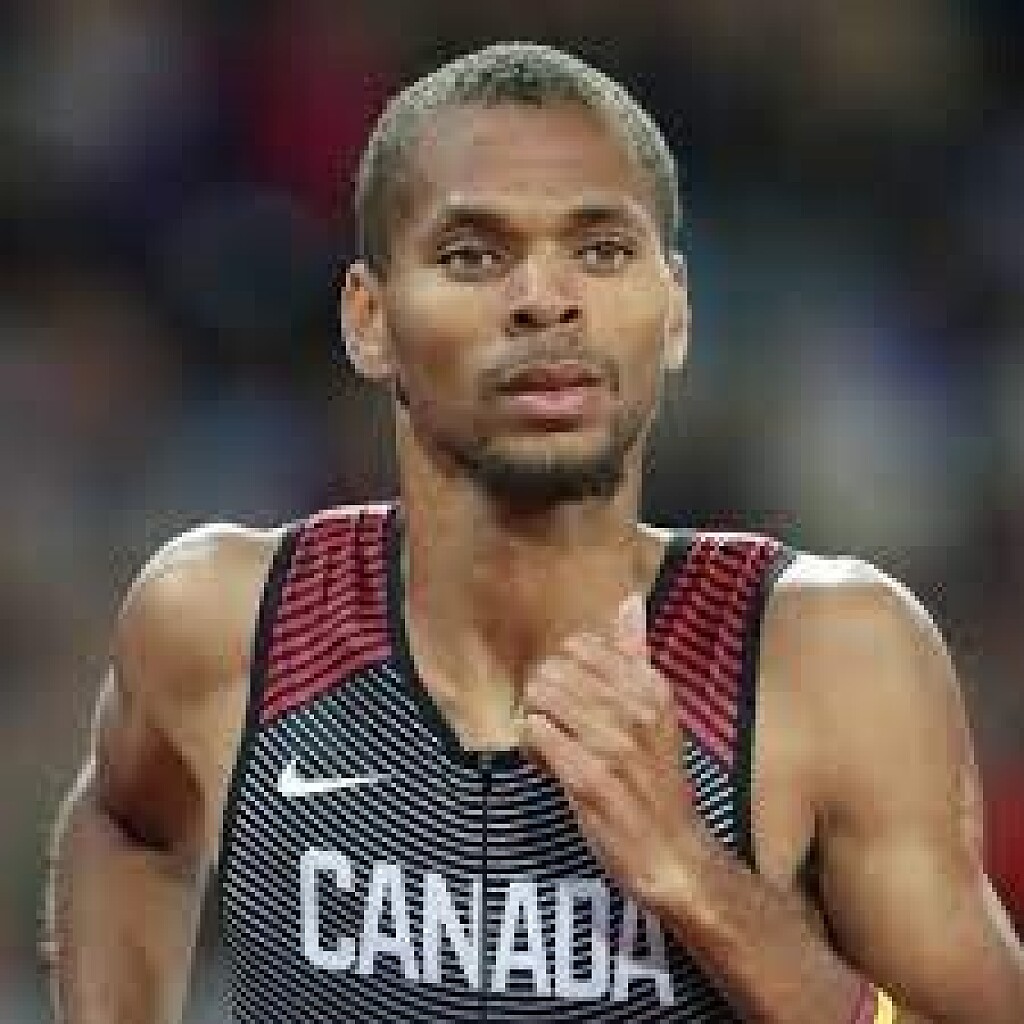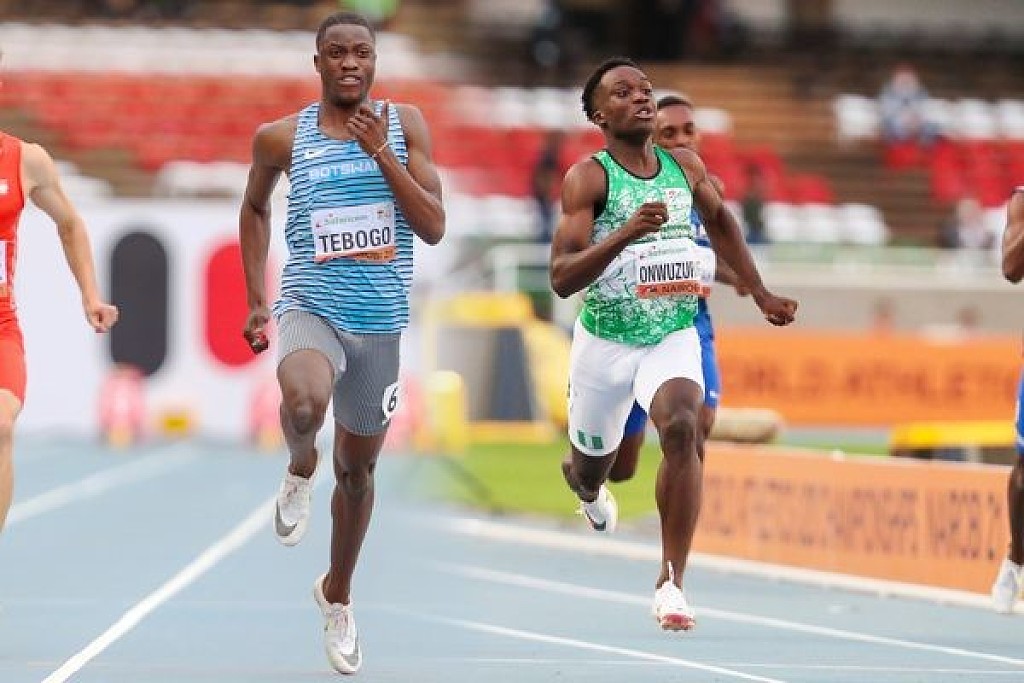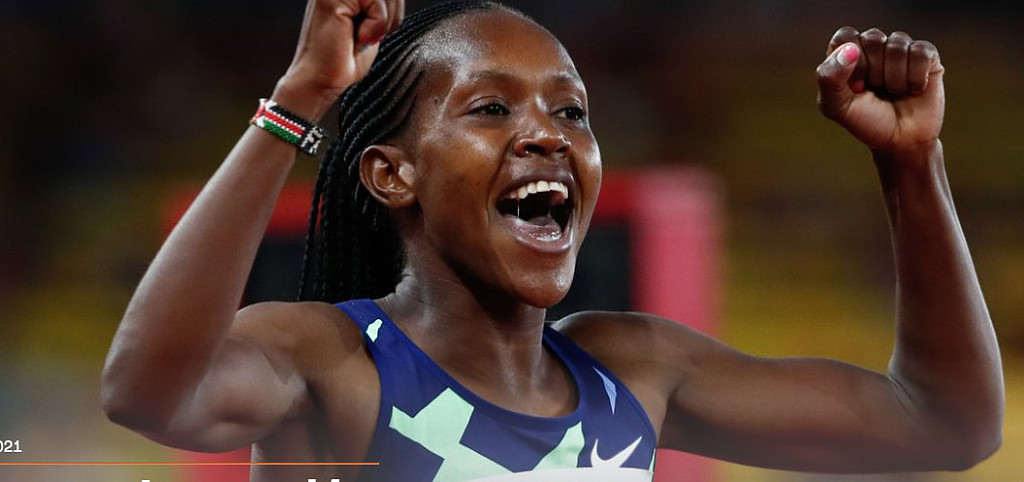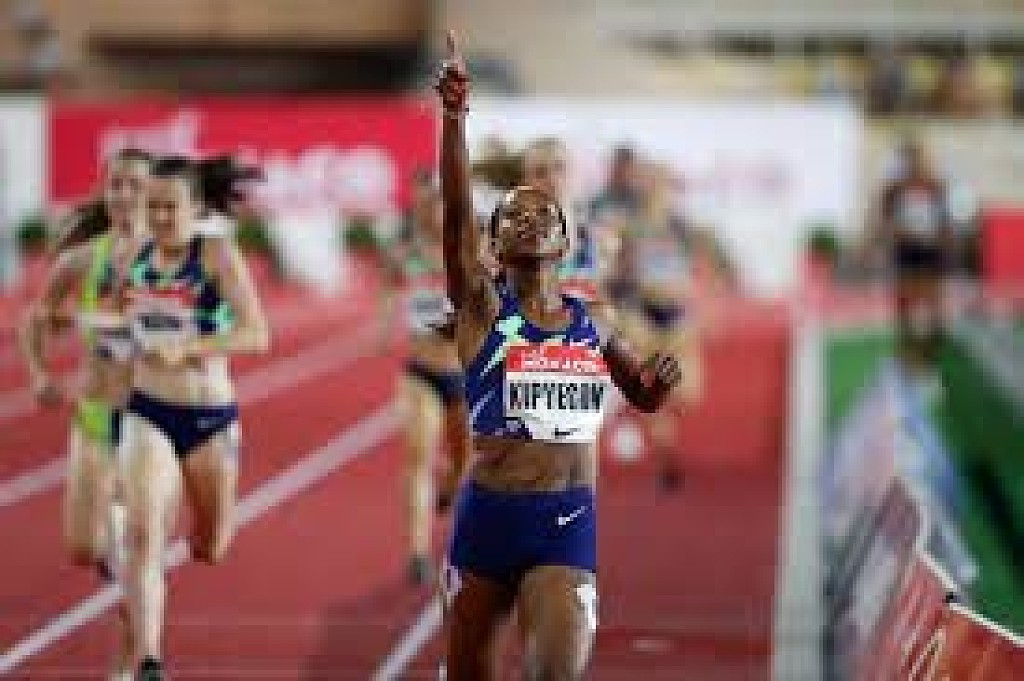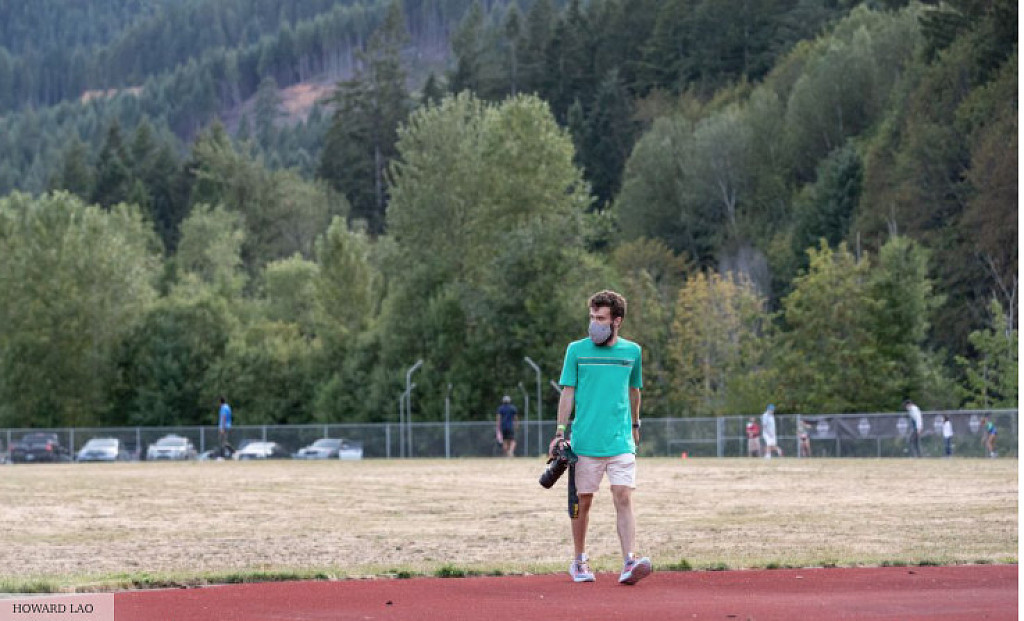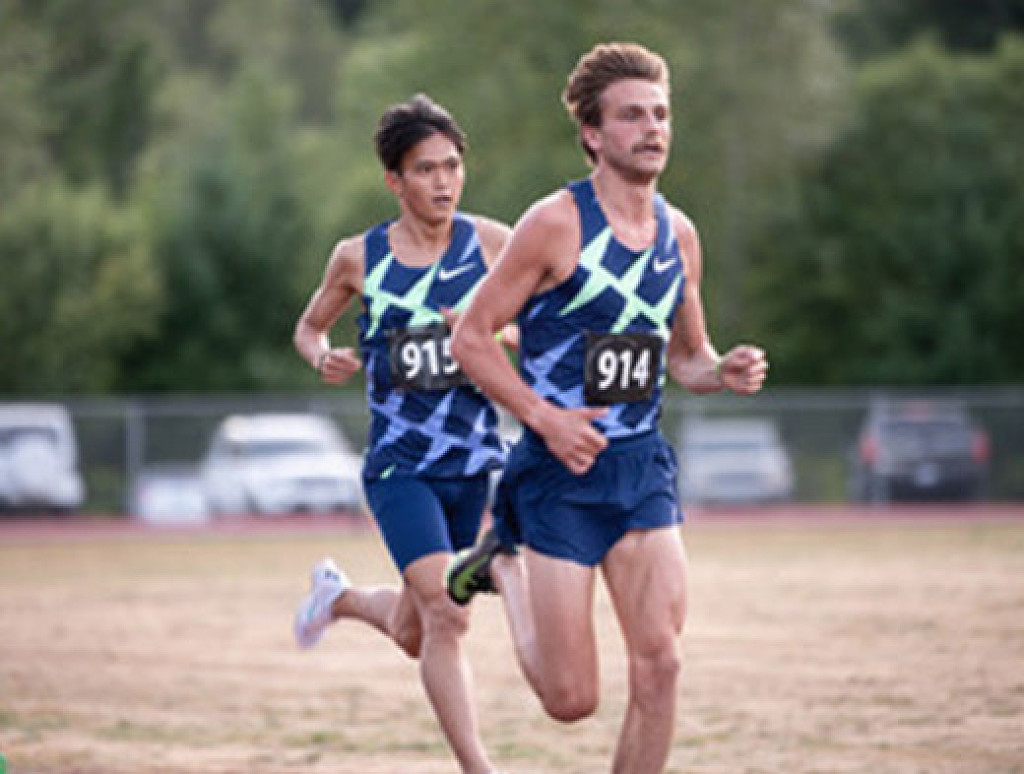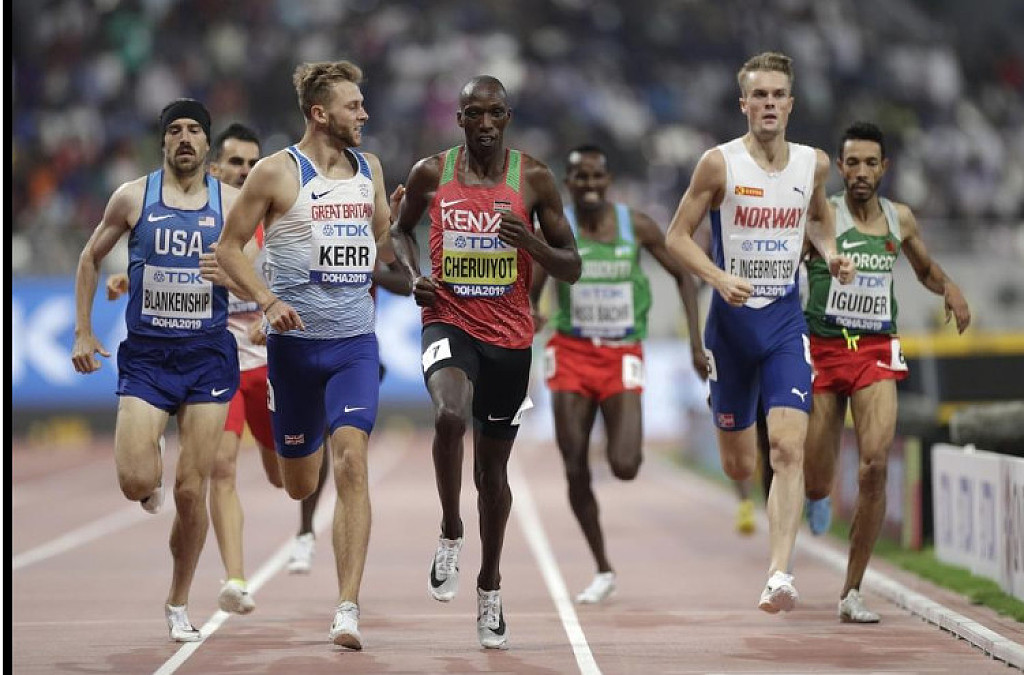Running News Daily
Running News Daily is edited by Bob Anderson. Send your news items to bob@mybestruns.com Advertising opportunities available. Train the Kenyan Way at KATA Kenya and Portugal owned and operated by Bob Anderson. Be sure to catch our movie A Long Run the movie KATA Running Camps and KATA Potato Farms - 31 now open in Kenya! https://kata.ke/
Index to Daily Posts · Sign Up For Updates · Run The World Feed
Articles tagged #Nijel Amos
Today's Running News
Jamaican Olympic medalist given four-year doping ban
The Tokyo 2020 Olympic 110m hurdles bronze medalist, Ronald Levy of Jamaica, was dealt a four-year ban after an out-of-competition test for GW1516.
On Friday, Ronald Levy, the Tokyo Olympic 110m hurdles bronze medalist from Jamaica, was handed a four-year ban by the Jamaica Anti-Doping Commission (JADCO) following a positive test for banned substances.
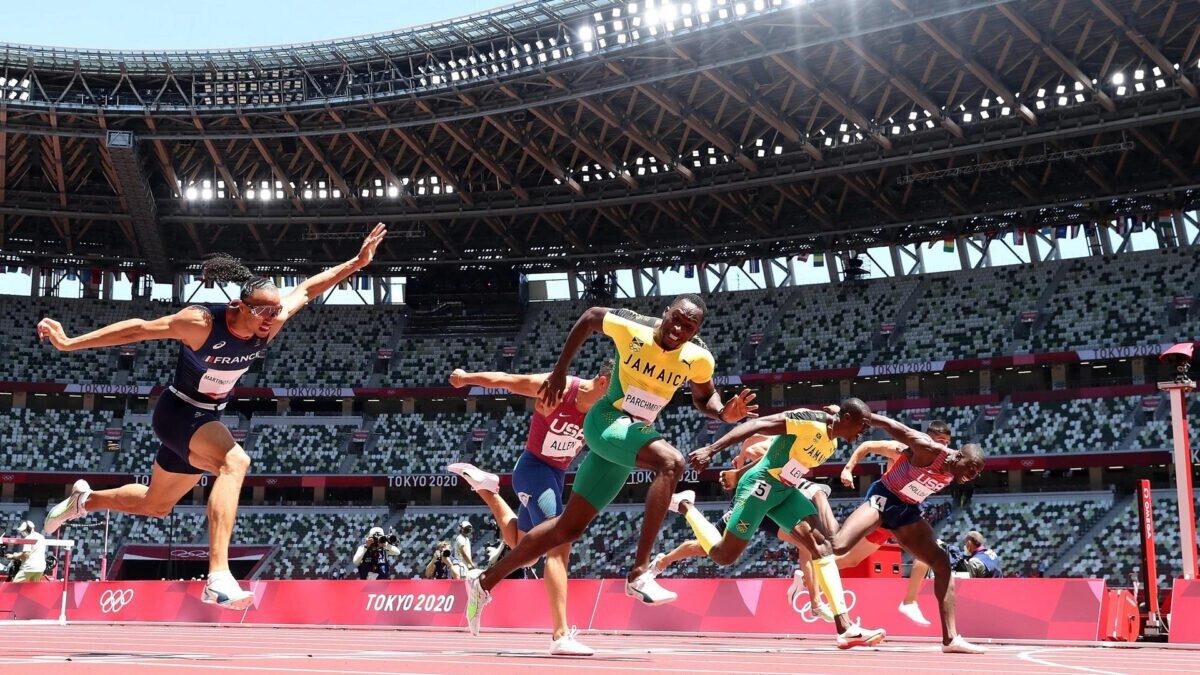
The substance detected in Levy’s sample, taken during an out-of-competition test in October 2023, was GW1516. This black-market drug is known for enhancing endurance and increasing the body’s ability to burn fat, allowing users to train harder and longer. However, GW1516 has not been approved for human use due to concerns about its potential cancer risks and other severe long-term health effects.
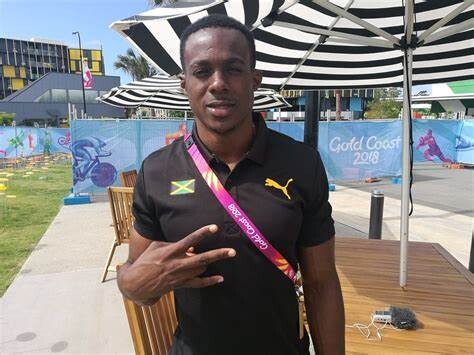
Levy said on social media that he was shocked at the positive test result, maintaining he did not knowingly violate any rules: “I am stunned by this turn of events because I have always conducted myself with the highest level of integrity in the sport, which I love dearly, and would never seek to gain an unfair advantage.”
The 31-year-old hurdler won bronze at the Tokyo 2020 Olympics behind American Grant Holloway and Levy’s fellow Jamaican, Hansle Parchment. He also won gold in the 110m hurdles at the 2018 Commonwealth Games. Levy has not competed since September 2023 and did not qualify for the 2024 Paris Olympics.
Levy has the right to appeal the decision and take his case to the Court of Arbitration for Sport (CAS). While a successful appeal could overturn the ban, the process could also result in significant financial and physical strain if the appeal is unsuccessful. This is the third high-profile GW1516 case in the past two years, following the positive tests of former Olympic 800m silver medalist Nijel Amos of Botswana and Surinamese sprinter Issam Asinga, the U20 100m record holder. Both men tested positive during out-of-competition tests.
by Marley Dickinson
Login to leave a comment
100m world junior record holder suspended for doping
Suriname’s Issam Asinga, who only two weeks ago stunned the athletics world by shattering the U20 100m world record at the South American Championships in Sao Paulo, Brazil, has been provisionally suspended by the Athletics Integrity Unit (AIU) for the alleged use or presence of a prohibited substance . The suspension, which went into effect Wednesday and was announced by the AIU on Friday, is for the presence of GW1516, a substance that modifies how the body metabolizes fat, and which can boost endurance.
Provisional suspensions are issued before a hearing to determine whether the charges warrant any official punishment.
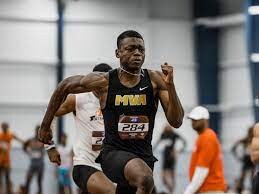
Botswana’s Nijel Amos, who won silver in the 800m at the 2012 Olympics in London, received a provisional suspension last year for the presence of the same metabolite ahead of the World Athletics Championships in Eugene, Ore. He ended up receiving a three-year ban.
GW1516 was originally developed to treat obesity and diabetes, but is not approved for human use, since it was discovered to be carcinogenic. It is banned in and out of competition, and not eligible for Therapeutic Use Exemption (TUE). A USADA bulletin from 2019 says GW1516 is also sometimes known as cardarine or endurobol and has been found in some supplements, even though it is illegal. In 2017, there were 31 sanctions worldwide related to its use.
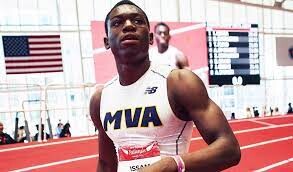
The 18-year-old Asinga clocked an impressive 9.89 seconds with a tailwind of (-0.8m/s) on July 28 to become the first South American sprinter to break the 10-second barrier in the 100m. His blazing run surpassed the previous record of 9.91 seconds set by Botswana’s Letsile Tebogo at last year’s World U20 Championships in Cali, Colombia, and also broke the South American area record, bettering the 10.00 mark set by Brazil’s Robson da Silva in 1988.
In addition to claiming a world record in Brazil, Asinga’ also picked up a free PlayStation 5 with his performance. A tweet posted last week shows retired American sprinter Justin Gatlin handing Asinga the video game console with the caption “The special moment when Justin Gatlin promised Issam Asinga a PS5 if he ran a legal 9.8 and he delivered!”
Asinga has made headlines in the 2023 season, running for Montverde Academy near Orlando, Fla. Earlier this year, he beat world champion Noah Lyles in a 100m race to break the U.S. high school record, and a week later, broke Lyles’s 200m high school record in 19.97 seconds.
The provisional suspension appears to have dashed Asinga’s dreams for gold at the World Athletics Championships in Budapest later this month, where he was set to run the double. The sprinter has plans to head to Texas A&M University in the NCAA on a full track and field scholarship this fall.
by Running Magazine
Login to leave a comment
Nijel Amos is trying to sell his 2012 Olympic silver medal
One week after Botswana’s Nijel Amos was handed a three-year ban for doping, he is now selling the Olympic silver medal he won in the 800m at the London 2012 Olympics.
Amos’ reason for selling his Olympic medal is to support his family. According to the BBC, the 29-year-old met with someone who wants to buy it for 4.5m Botswanan pula (USD $300,000), but Amos believes the value of his medal will double with the release of his upcoming documentary on Netflix, to be released later this year.
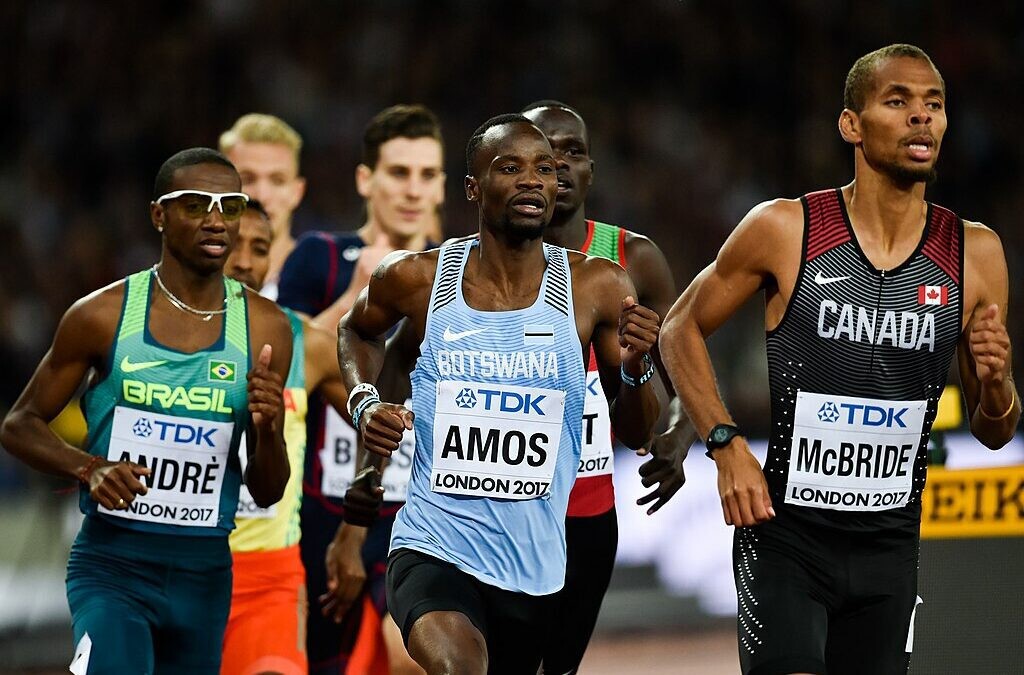
He finished second in the 800m behind world record holder David Rudisha of Kenya, making him the first Botswanan to win an Olympic medal in any event. Amos holds the third-fastest 800m time in history (1:41.73), and is one of only five men who have gone under 1:42.
The 800m runner was initially suspended in July 2022 after an out-of-competition test revealed a banned metabolic modulator, GW1516. Amos faced a four-year ban, but it was reduced to three years after he signed a letter of admission.
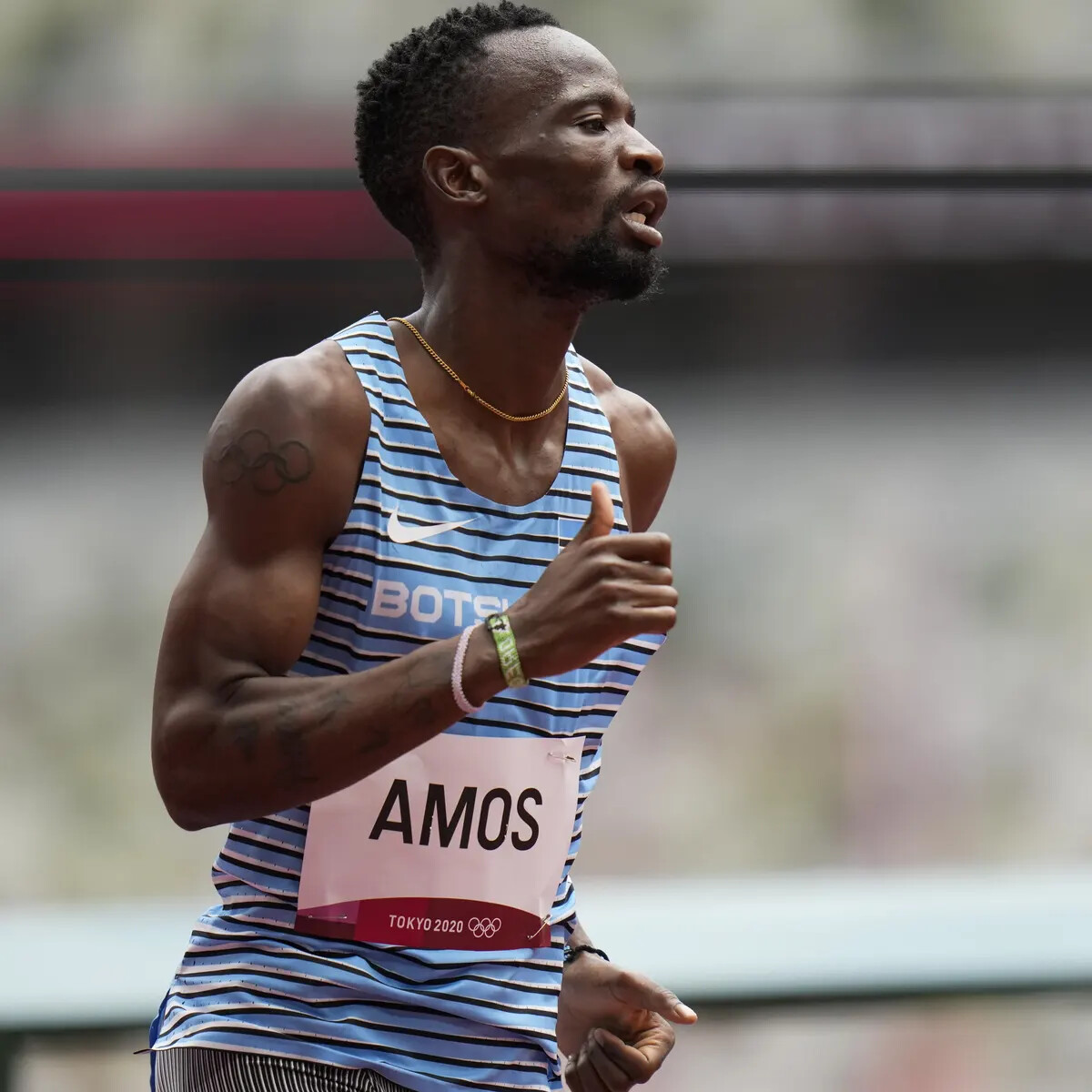
However, he is still fighting the case. “It has been a financially draining process,” Amos said in a statement. He has reportedly incurred $67,000 in legal fees and travel expenses.
Amos said it is difficult to survive in Botswana, where athletes are not given pensions or any lump sum insurance payouts.
GW1516 was originally developed to treat obesity and diabetes but is not approved for human use, since it was discovered to be carcinogenic. It is banned in and out of competition, and not eligible for a therapeutic use exemption (TUE).
by Marley Dickinson
Login to leave a comment
Botswana’s Nijel Amos 800m star and Olympic medalist, banned three years for doping
Botswana’s Nijel Amos, the joint-third-fastest 800m runner in history, was banned three years for doping.
The case stemmed to last June, when he tested positive for GW1516, an experimental drug which can modify the body’s metabolism but has been considered too dangerous for human use.
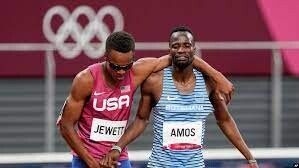
The ban was backdated to last July, when Amos was provisionally suspended pending an investigation. His ban now runs to 2025, which means the 29-year-old Amos will miss the 2024 Paris Olympics.
Amos received a one-year reduction of what would otherwise be a four-year ban because he made an early admission and acceptance of the suspension.
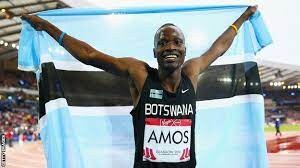
That came after he requested a supplement be tested for the presence of the drug. The test did not detect any GW1516 in opened and sealed bottles.
GW1516 was developed to help build endurance and burn fat but was found to cause cancer during tests on rodents. Anti-doping organizations have warned athletes not to use it on safety grounds.
The drug has previously been found in samples given by professional cyclists and by Olympic race walker Elena Lashmanova. The Russian served a two-year ban and was later stripped of the 20km gold medal she won at the 2012 Olympics for another doping offense.
In 2012, Amos, then 18, took silver in the 800m at the London Games in what many called the greatest Olympic race in history. Kenyan David Rudisha lowered his world record. Amos matched Seb Coe as the third-fastest man in history in the event (1:41.73). Every runner’s time was the fastest ever for that finishing placement.
Amos has not won an Olympic or world championships medal since. In July 2019, he ran 1:41.89, the world’s best time since that London Olympic final.
At the Tokyo Olympics, Amos and American Isaiah Jewett got tangled in the final lap of their semifinal. In an act of good sportsmanship, the runners helped each other up and later jogged across the finish line together in the last two places. Amos was granted a place in the final and finished eighth.
by OlympicTalk
Login to leave a comment
U.S. Olympian Hassan Mead accepts three-year doping ban
Former U.S. Olympian and 2018 NACAC 10,000m champion Hassan Mead has accepted a three-year suspension for an anti-doping rule violation.
On Nov. 29, USADA announced that Mead, 33, tested positive for two anabolic agents—ostarine (enobosarm) and ligandrol (metabolite di-hydroxy-LGD-4033) as the result of an out-of-competition urine sample collected on Oct. 17. Mead has not competed since the 2022 Prefontaine Classic on May 27.
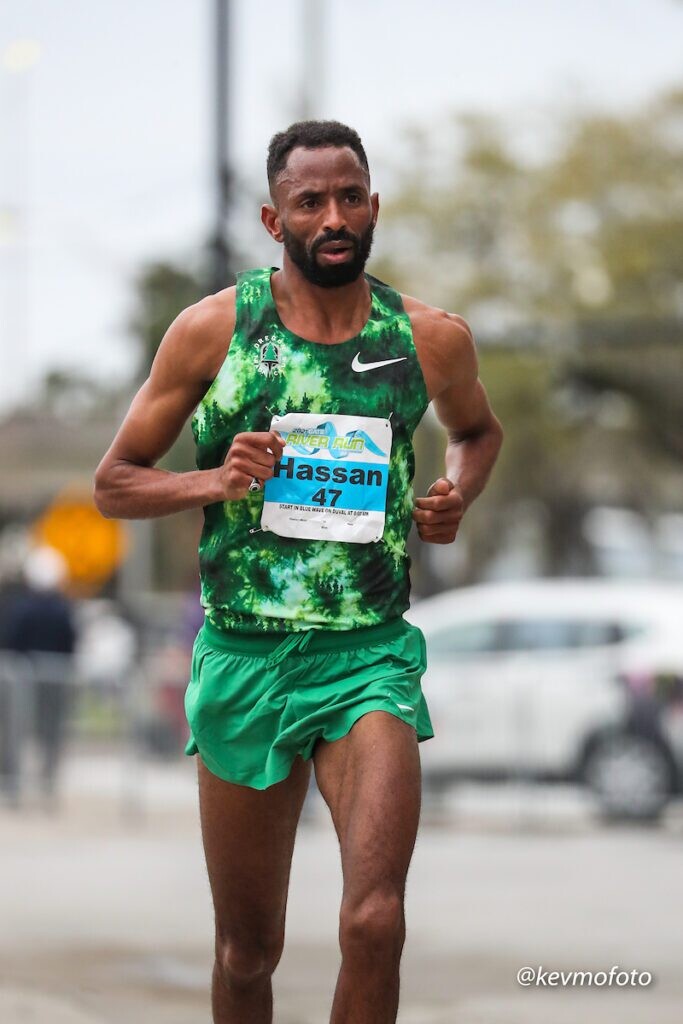
Athletes will use ostarine to increase muscular strength and power without causing excessive weight gain or water retention. Ligandrol can make fat loss more efficient and has muscle-gaining effects.
Although Mead has not raced in six months or announced his retirement, he will not be eligible to compete until 2025. Since 2012, Mead trained with Nike’s Oregon Track Club (OTC) under coach Mark Rowland. Rowland is currently the Athletics Canada West Hub Coach (Endurance) in Victoria, a position he took earlier this summer.
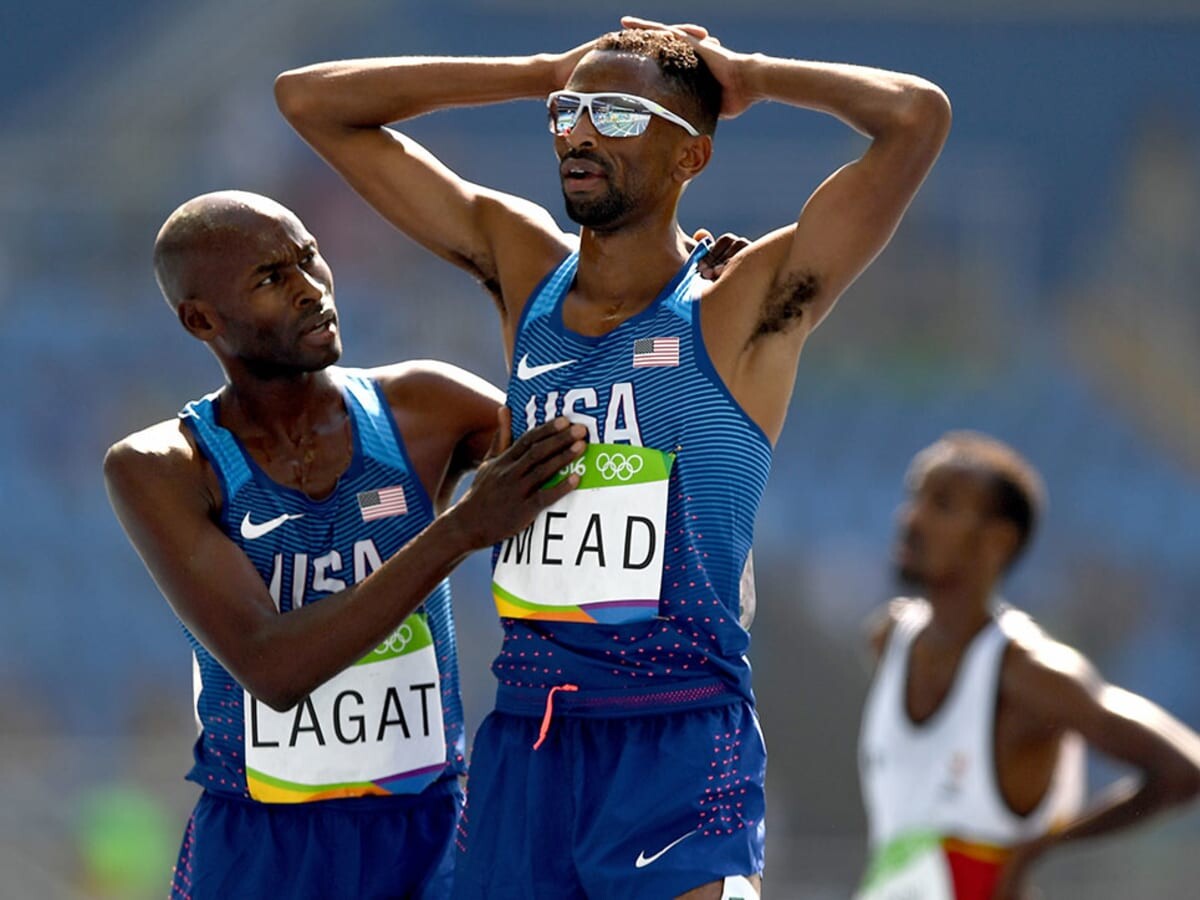
Mead’s agent Chris Layne gave a comment to CitiusMag regarding the ban:
“Mead stopped running and let us know he would be retiring immediately at the end of May 2022. At this point, he stopped training and started to take an over-the-counter pre-workout drink for lifting in the gym. Mead made a regrettable decision to not file the retirement paperwork, which kept him in the USADA testing pool until November. Mead has never failed a drug test while competing and this is a sad situation of not filing paperwork on time.”
The Portland, Ore. runner is the second OTC athlete to receive anti-doping sanctions this year. His teammate and 2012 Olympic silver medallist in the 800m, Nijel Amos, was provisionally suspended by the Athletics Integrity Unit (AIU) for the use of GW1516—a drug that modifies how the body metabolizes fat and that boosts endurance.
Mead has represented Team USA six times internationally, with his top finish coming at the 2016 Olympic Games, where he was 11th in the men’s 5,000m final. He made a run at qualifying in the 5,000m for the 2020 Olympics in Tokyo, but he wound up 11th at U.S. Olympic Trials.
by Marley Dickinson
Login to leave a comment
Olympic 800m medalist Nijel Amos suspended for doping
The third fastest 800m runner of all time, Botswana’s Nijel Amos has been provisionally suspended ahead of this week’s World Championships, after the 2012 Olympic silver medallist tested positive for a banned metabolite, the Athletics Integrity Unit (AIU) said on Tuesday.
The drug found in the 28-year-old’s system was GW1516, which modifies how the body metabolizes fat, and which can boost endurance. An AIU press release said that the World Anti-Doping Agency (WADA) has also warned that it poses a health risk to athletes.
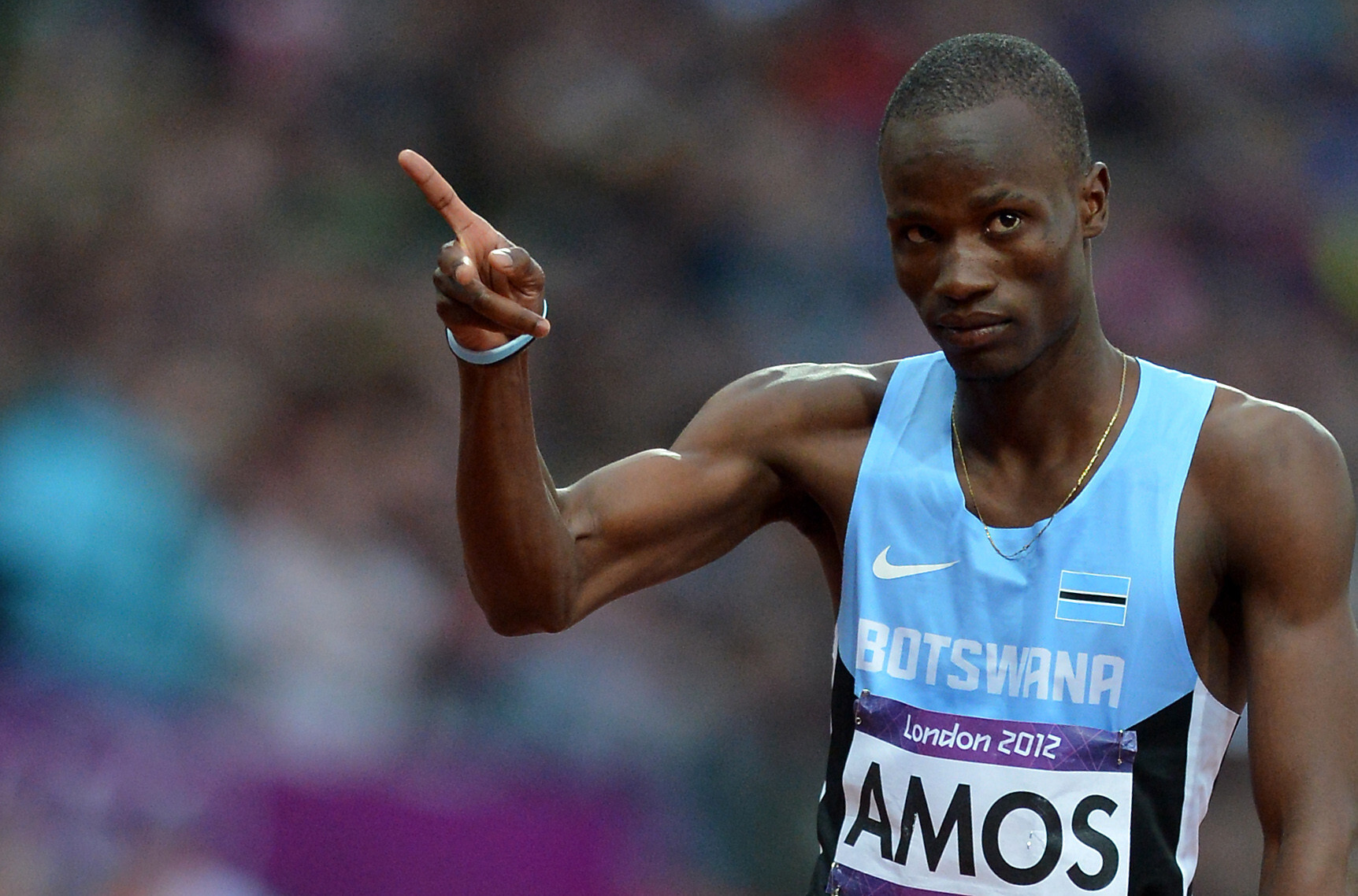
GW1516 was originally developed to treat obesity and diabetes, but is not approved for human use, since it was discovered to be carcinogenic. It is banned in and out of competition, and not eligible for Therapeutic Use Exemption (TUE). A USADA bulletin from 2019 says GW1516 is also sometimes known as cardarine or endurobol and has been found in some supplements, even though it is illegal. In 2017, there were 31 sanctions worldwide related to its use.
The AIU collected the sample from Amos during an out-of-competition test on June 4. Amos was notified of the result while he was preparing for the World Championships in Eugene, Ore., where he was scheduled to compete in the heats of the 800m on July 20. He finished eighth in the 800m final at Tokyo 2020. At Rio in 2016, he failed to make it out of the heats.
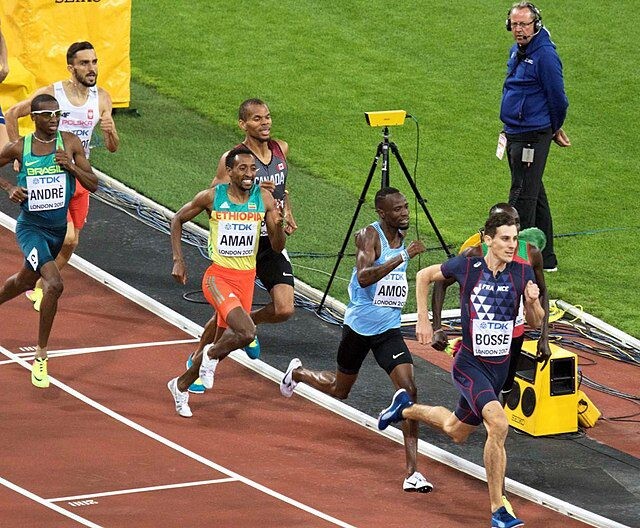
Amos’s silver in the 800m from the London Olympics was Botswana’s first Olympic medal and ranks as the third-fastest 800m time ever (1:41.73) behind Kenya’s David Rudisha (1:40.91) and Wilson Kipketer (1:41.11).
Amos has spent his last six seasons training with Mark Rowland and the Nike Oregon Track Club. Rowland recently left the club to start a new role as a coach with the Athletics Canada West Hub.
The AIU says the length of his suspension will be determined at a later date.
by Marley Dickinson
Login to leave a comment
One month to go - Road to Oregon22
One month from yesterday, the World Athletics Championships Oregon22 – the first to be held in the United States – will get under way at the all-new Hayward Field in Eugene.
One week from today, that same venue will stage the fearsome, first-three-home drama of the USATF Championships, where home athletes will seek to earn the right to return to the re-built arena once the global event starts on 15 July.

The perennial jeopardy of that event means that some of the most likely home medallists cannot yet be inked in for the World Championships. But wild card entries for defending champions mean that US athletes such as 200m gold medallist Noah Lyles, who has demonstrated convincing form in recent weeks and days, will count on toeing the line.
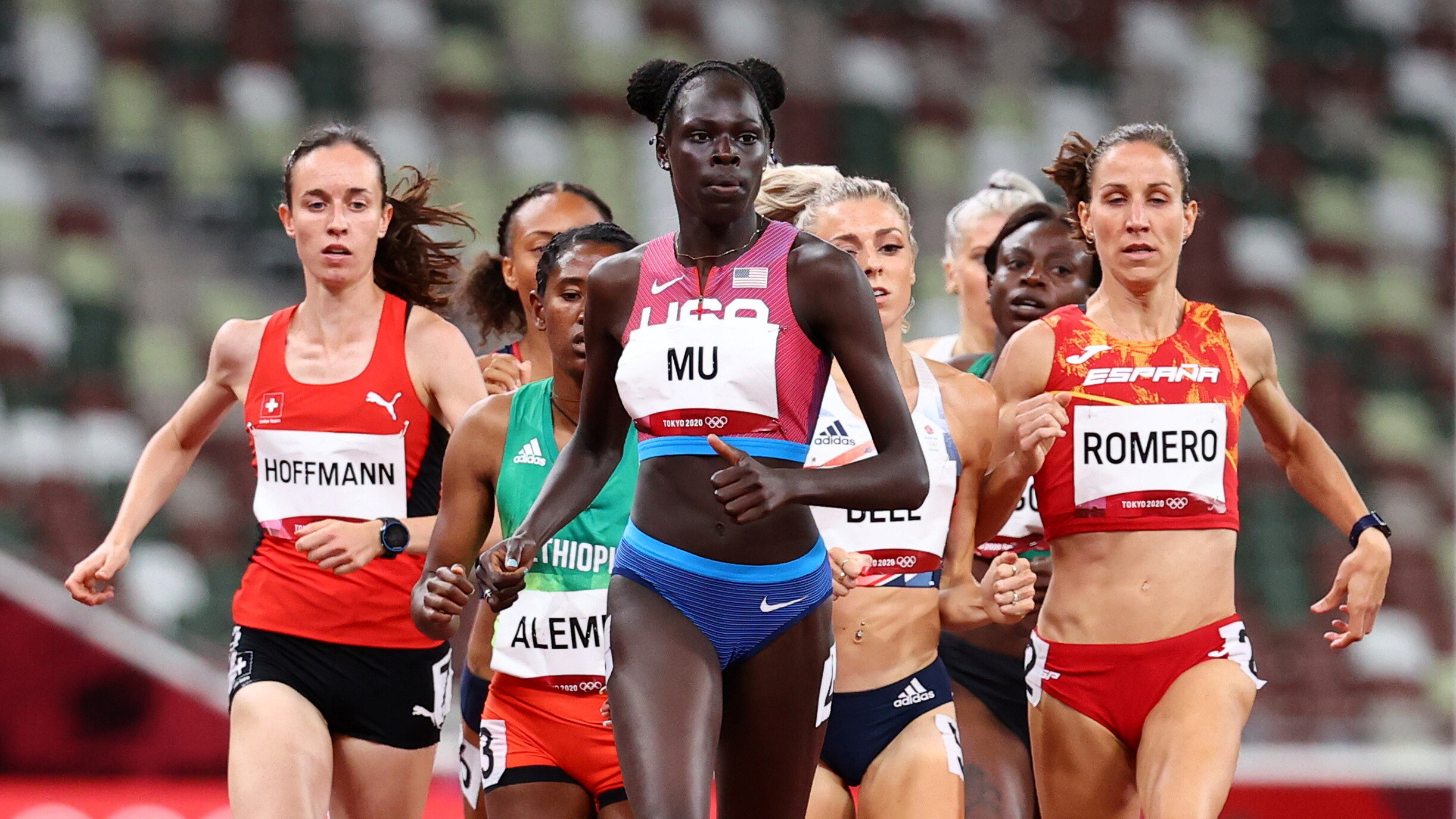
Prospective challengers for medals in Eugene, notably from Europe and Africa, have been laying down their markers in earnest over the last fortnight, however, as the meetings have come thick and fast. The level of excitement and anticipation is rising rapidly on the Road to Oregon.
Britain’s Keely Hodgkinson has her sights firmly set on world 800m gold in Oregon. As does her fellow 20-year-old Athing Mu of the US, who beat her to Olympic gold in Tokyo last year. Something has to give.
Hodgkinson eschewed an almost certain 800m medal at the World Indoor Championships in March as a precaution after feeling a muscle twinge in warm-up for the final – it had to be gold or nothing for her, and she didn’t want to risk what promises to be a richly busy outdoor season.
After an impressive victory in Birmingham she travelled to the Eugene Diamond League keyed up for a pre-World Championships battle with her rival, only to find that Mu was a no-show following the after-effects of having Covid-19.
The Briton did all she could to lay down a big marker on the track where the world golds will be disputed, piling in to win in 1:57.72, the fastest time of the year.
The glove was down. And less than a fortnight later at the Rome Diamond League meeting it was firmly grasped by Mu as she answered the challenge by romping home to win in 1:57.01.
Emmanuel Wanyonyi, the phenomenal 17-year-old who won the world U20 men’s 800m title on his home track of Nairobi last year, has maintained impressive momentum this season, winning in 1:44.15 in Ostrava and coolly outrunning Botswana’s 2012 Olympic silver medallist Nijel Amos at the Rabat Diamond League meeting to win in 1:45.47.
In the Moroccan capital, local hero Soufiane El Bakkali, whose Tokyo victory in the men’s 3000m steeplechase provided his country with its only medal from the Games, once again defeated his great Ethiopian rival Lamecha Girma in a race that nearly blew the roof off the Prince Moulay Abdellah Stadium.
Login to leave a comment
World Athletics Championships Budapest23
Budapest is a true capital of sports, which is one of the reasons why the World Athletics Championships Budapest 2023 is in the right place here. Here are some of the most important world athletics events and venues where we have witnessed moments of sporting history. Throughout the 125-year history of Hungarian athletics, the country and Budapest have hosted numerous...
more...Canadian Brandon McBride joins Oregon Track Club Elite
Canadian 800m record holder Brandon McBride has parted ways with his former collegiate coach, Chris Woods, and will be joining Oregon Track Club Elite (OTC) for the 2022 season.
McBride will be joining fellow Canadian middle-distance runner William Paulson and the third-fastest 800m runner of all-time (1:41.73), Botswana’s Nijel Amos, who was second to the great David Rudisha at the 2012 London Olympics. “I am looking forward to this exciting opportunity with OTC,” McBride says. “They have a great middle-distance group.”
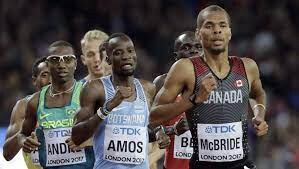
The Windsor, Ont. native holds a personal best time of 1:43.20, which is the fastest 800m time ever run by a Canadian. McBride has battled injuries in the last two seasons, which led him to a disappointing finish at the Tokyo Olympics.
Since the Tokyo Olympics, Mcbride has been driven on getting back to 100 per cent “I have my eyes on a return for the outdoor season,” he says.
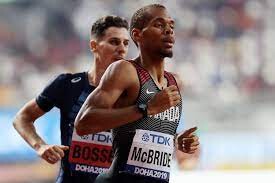
He will now be coached by Mark Rowland, who has had a lot of success working with middle-distance runners Francine Niyonsaba, Ben Blankenship, Hanna Green and Amos.
For the past five years, McBride was sponsored by Adidas, training under his old collegiate coach at Mississippi State University, with fellow Canadian 800m runner Marco Arop, who came off a career-best season on the Diamond League, with five podium finishes.
McBride is a two-time Olympian (2016 and 2020) and a World Championship finalist (2017).
by Marley Dickinson
Login to leave a comment
Letsile Tebogo and Udodi Onwuzurike set the pace for Africa’s new generation of sprinters
Letsile Tebogo, Udodi Onwuzurike, Christine Mboma, Anthony Pasela, Imaobong Nse Uko and Benjamin Richardson are just some of Africa’s rising sprint stars, and their achievements this season could signal a revival for the continent.
When Tebogo opted to compete in the 100m and 200m, despite hailing from a country best known for its quarter-milers, it was with the aim of breaking barriers and inspiring a change in Botswana.
But the 18-year-old surpassed even his own expectations in Nairobi when he gifted his country its first ever global gold medal in the 100m, setting national U20 records of 10.22 and 10.11 in the process. His 10.11 clocking actually broke the senior national record, surpassing Makwala’s former mark of 10.20 set seven years ago.
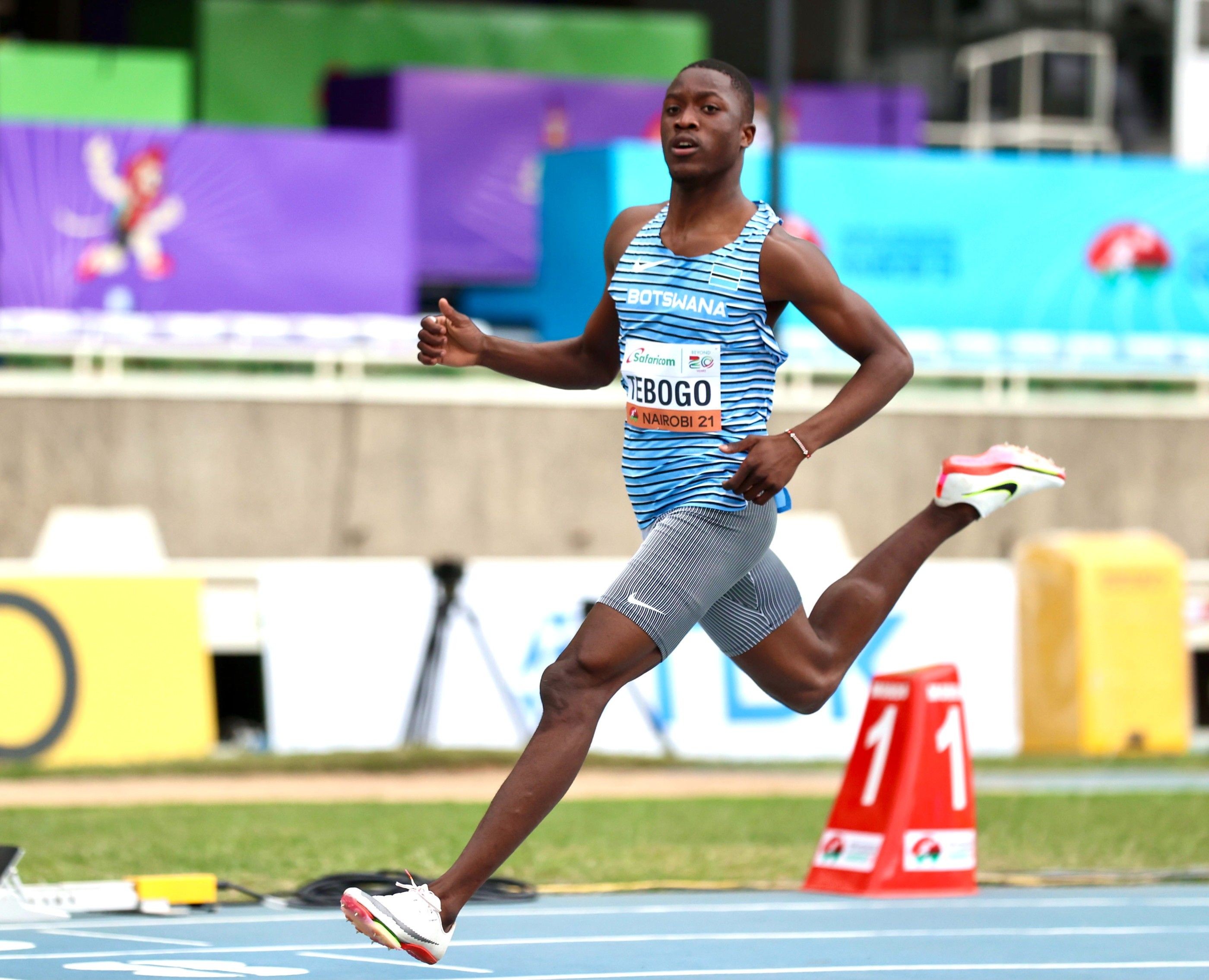
“The motivation to get into athletics was from watching the big guys like Isaac Makwala, Karabo Sibanda and Nijel Amos,” said Tebogo. “However, I just really wanted some change in the country, so I had to do something different from the big guys, that’s why I opted to compete in the 100m and 200m. I’m really proud of my performance and I know back at home they’re proud of me bringing the first gold medal to Botswana.”
Tebogo led a 1-2 for Africa as Benjamin Richardson of South Africa took silver in 10.28 while Cuba’s Shainer Rengifo earned bronze with 10.32.
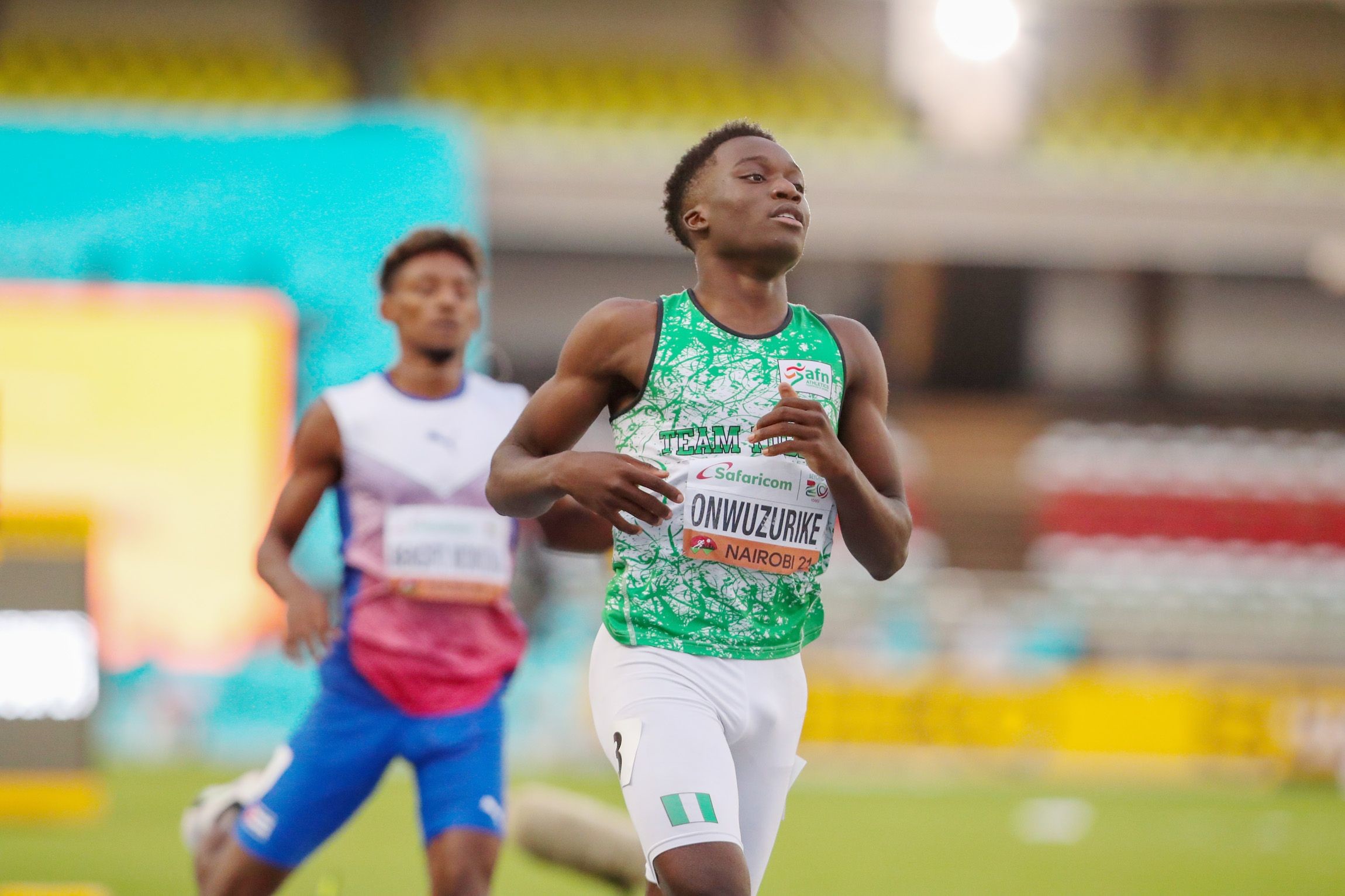
For Richardson, who would go on to anchor his country to Africa’s first ever gold in the men’s 4x100m in a world U20 record of 38.51, the podium finishes by Botswana and South Africa in the men’s 100m is the start of something big for the continent.
“We’ve started to become better,” he says. “Two Africans finishing first and second; you can see that there’s something coming. We’re going to dominate soon.”
Tebogo also competed in the 200m, which had been regarded as his stronger event. A sprint double was not to be, though, as he eventually took silver behind Nigeria’s Udodi Onwuzurike, who didn’t appear as a likely medal contender in the build-up to the championship.
Onwuzurike also started in track and field when he was about eight years old, and he grew up watching his brother Chiebuka, who is older by almost six years, compete in the 100m and 200m. The older Onwuzurike went as far as competing for Boston University and holds personal bests of 10.46 and 21.37. For the younger Onwuzurike, the dream was to take things a notch higher: become an NCAA champion, an Olympic champion and a world champion. And so began his quest.
At the World U20 Championships in Nairobi, Onwuzurike’s first ever outing for Nigeria, he lowered his personal best from 20.78 to 20.47 in his heat, and then clocked 20.13 in the semifinals which would have been a championship record but for the wind (2.4m/s).
He then stormed to gold with a national U20 record of 20.21 to become the first Nigerian in World U20 Championships history to win 200m gold since 1996 when Francis Obikwelu won the sprint double, and the second fastest Nigerian over the distance in 2021. South Africa’s Sinesipho Dambile clocked a season’s best of 20.48 for bronze, completing the African sweep.
Though stung by his loss to Onwuzurike, Tebogo said that the overall 200m result was a good one for Africa. “I’m really proud and excited about this,” he said. “It (an African sweep) was my dream. Even in the call room I told Dambile ‘Bro we have to do this. We have to bring the medals back home’. I felt it should be a 1-2 or 2-3, but maybe the Nigerian overheard us and that’s why he came to beat us,” he added with a chuckle.
For Onwuzurike, who is off to Stanford University soon, making history for Nigeria and Africa is a dream come true.
“I would say it’s surreal, it’s amazing,” he said. “I never thought I would be able to make it to this level of track, I never even knew I would be able to go to college running track. Track was always first like a fun sport because I’ve always been a little quick but it’s amazing. Having this as one of my last high school races before I go to college, it’s an amazing moment.
“I had a very rough year and got injured numerous times and felt my numbers were not really good at showing what I’m capable of, so coming out and being able to show on the global stage that I’m truly the best is amazing. It’s all I ever wanted, all I ever prayed for.”
by World Athletics
Login to leave a comment
Kipyegon cruises to Kenyan 1500m record in Monaco
It’s all about keeping the faith.
Going into tonight’s 1500m at the EBS Herculis meeting in Monaco, world champion Sifan Hassan announced that she had asked for a pace of 61-second laps, which would add up to a second or so under the current world record of 3:50.07.
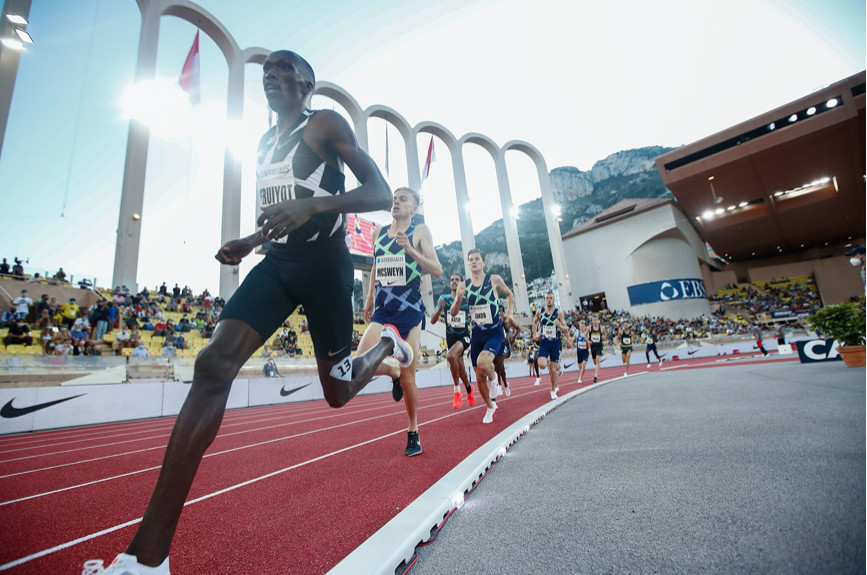
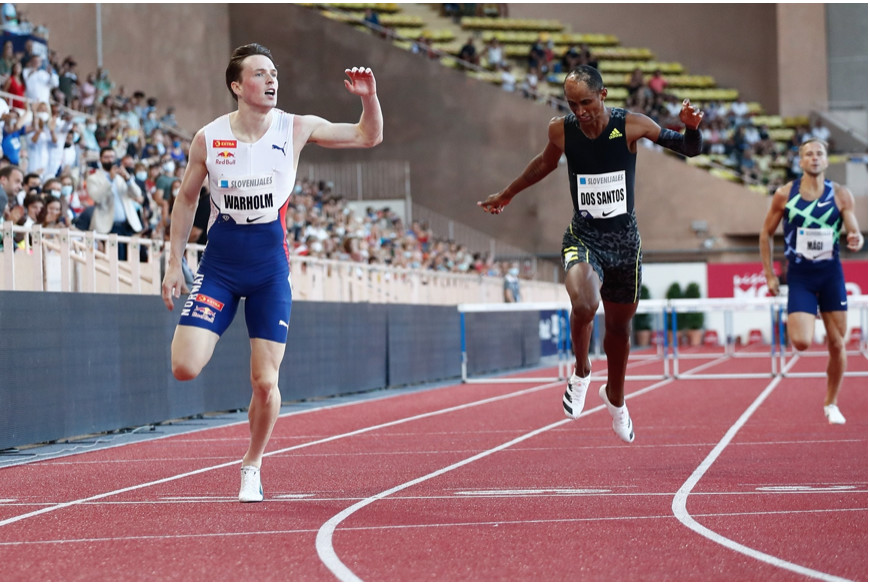
The Dutchwoman has set world records twice previously in Monaco, most recently over the mile two years ago, and she was feeling confident after rediscovering her love for the metric mile with a victory over Olympic champion Faith Kipyegon at the Wanda Diamond League meeting in Florence last month.
Hassan even floated the idea of adding the 1500m back into her Olympic schedule, having previously declared that she would attempt the 5000m-10,000m double.
She locked in behind the pacemaker from the beginning, her ambition obvious. Only Kipyegon and Ethiopia’s Freweyni Hailu dared to follow and the race was down to three when they reached the bell.
Hassan then turned the screws, but Kipyegon clung to her like a limpet down the back straight as the Dutchwoman stretched out her legs for the run home.
In the past three years races have inevitably gone Hassan’s way in this situation, her unmatched mix of speed and endurance proving irresistible. But not this time.
As they entered the final straight Kipyegon kicked hard, dashing past her rival and sprinting down the straight to win in 3:51.07, a Kenyan record and the fourth fastest time in history. In the last 90 metres she put two-and-a-half seconds into Hassan, who finished in 3:53.60, with Hailu third in a personal best of 3:56.28.
Despite her recent losses to Hassan, Kipyegon said she remained confident that her day would come.
“I knew Sifan was going for a fast race and my goal was to run a fast race here and I thank God that was,” she said. “I am really looking forward to Tokyo and I know it will be a very hard competition but I hope to go there and defend my title.”
Kipyegon gave birth to her first child in 2018, returning in 2019 to finish second to Hassan at the World Championships in Doha, but has now found an even richer vein of form than that which carried her to the Olympic title in 2016 and the world title in 2017. “I came back after giving birth and I feel like a role model for the young mothers out there and the young athletes,” she said. “I hope to show them that when you go for maternity leave, this does not mean the end of your career. You can come back strong and win races.”
Fellow Kenyan Timothy Cheruiyot was also a man on a mission tonight.
With his Olympic dreams hanging in the balance, the world 1500m champion dashed to the fastest time in the world for six years.
An out-of-sorts Cheruiyot was a shock fourth at the Kenyan Olympic trials last month, putting him in grave danger of missing selection. The situation has been complicated by the fact that second-placed Kamar Etiang has not completed the requisite number of anti-doping tests to qualify for the Olympic Games so his eligibility is in question.
That has left Cheruiyot in limbo just weeks before the Tokyo Games, but he thrust aside all that uncertainty to race with clear intent in Monaco.
In the fastest race of the year, he led at the bell and fought off all challenges, setting a personal best of 3:28.28 as four men dipped under 3:30.
Spanish surprise packet Mohamed Katir took almost five seconds from his personal best to finish second (3:28.76 national record) ahead of European champion Jakob Ingebrigtsen (3:29.25) and Australia’s Stewart McSweyn, who set an Oceanian record of 3:29.51 in fourth.
Cheruiyot revealed afterwards that a hamstring injury and the death of a relative on the day of the Kenyan trial had affected his performance there but he still hoped to be selected for the Olympics.
“Hopefully that will be the deciding performance to make the team for Tokyo,” he said.
Amos and Muir impress over two laps
On a night of high-quality middle distance running, Botswana’s Olympic medallist Nijel Amos roared back to top form, recording the fastest time of the year to down a field full of Olympic contenders.
With his arms flailing, Amos used his awkward but effective running style to propel himself past Kenya’s Emmanuel Kori (1:43.04) and Canada’s Marco Arop (1:43.26).
Britain’s Laura Muir also had the last laugh in a world-class 800m field, looming late to take the win in a big personal best of 1:56.73. Muir had never cracked 1:58 previously for the distance, but had the strength to haul in her training partner Jemma Reekie (1:56.96) and USA’s Kate Grace (1:57.20) in the final metres as all three women set personal best times.
Muir has decided to focus her energy on the 1500m in Tokyo but that will be no easy task as Kipyegon demonstrated.
Both 3000m steeplechase races were suffused with drama and unpredictability at the Stade Louis II.
The men’s race descended into confusion when an official rang the bell a lap too early, but world silver medallist Lamecha Girma still managed to run a world-leading time of 8:07.75 to take the win from Abraham Kibiwot, just 0.06 behind.
In the women’s race, 2015 world champion Hyvin Kiyeng made a break from the pack after two kilometres but misjudged the remaining laps and kicked too early. After crossing the line and hearing the bell for the actual final lap, the Kenyan tried to muster some energy to run another circuit. USA’s 2017 world champion Emma Coburn positioned herself to challenge Kiyeng as they approached the water jump, but Coburn stumbled at the hurdle and fell into the water losing all momentum, leaving Kiyeng to take the victory in 9:03.82, with world record-holder Beatrice Chepkoech second in 9:04.94 and Winfred Yavi third (9:05.45). Coburn regathered herself to cross the line in fourth place in 9:09.02.
Baker blasts to 100m victory
There was unpredictability too in the men’s 100m where the form book was upended as the ever-reliable Ronnie Baker claimed victory in 9.91, from African record-holder Akani Simbini (9.98) and Italian Marcell Jacobs (9.99).
World leader Trayvon Bromell, regarded by many as the man most likely to win the Olympic 100m crown in Tokyo next month, lacked his usual zip and could only finish fifth in 10.01.
World 100m champion Shelley-Ann Fraser-Pryce used her early speed to take the lead on the bend in the women’s 200m, but could not hold off the Olympic 400m champion Shaunae Miller-Uibo in the straight.
Miller-Uibo, who has chosen to focus on the 200m for Tokyo, won in 22.23 from Marie-Josee Ta Lou (22.25) with Fraser-Pryce third (22.48).
New world 400m hurdles record-holder Karsten Warholm returned to the competition track for the first time since his heroics in his hometown Oslo last week, eager to challenge his new “personal best” of 46.70.
He made a typically aggressive start, making up the stagger by the second hurdle, but ultimately he could not match the pace he set last week, crossing the finish line in a meeting record of 47.08, still the fourth fastest time of his career and faster than all but five other men in history.
He was pleased to maintain such a consistently high level of performance. “This was a good race so I’m satisfied,” he said.
Brazil’s Alison Dos Santos continued to build his Olympic medal credentials with a strong second place in 47.51, just outside his personal best of 47.34, also set in Oslo.
In the field, US pole vaulter Katie Nageotte carried her fine form to Europe to clear 4.90m and claim an impressive victory over world champion Anzhelika Sidorova and Olympic champion Katerina Stefanidi, who both cleared 4.80m.
A tight high jump competition was decided by a jump-off after both neutral athlete Mikhail Akimenko and Canadian Django Lovett were tied with best clearances of 2.29m. Akimenko then claimed the victory by leaping 2.32m in the decider.
World triple jump champion Yulimar Rojas had a tough night at the office, fouling four of her six jumps, including two that looked like they would have challenged the world record (15.50m). She led after five rounds with a best leap of 15.12m but could not find the board in the all-important sixth round under the Final 3 format being trialled in the Diamond League this year.
Jamaica’s Shanieka Ricketts took the win with 14.29m after she was the only one of the top three to register a legal jump in the final.
The men’s long jump also finished with an anti-climax after Miltiadis Tentoglou was the only one to hit the board in the final round (8.24m).
The women’s javelin was the only throwing event on the programme and saw a return to the winner’s circle for the veteran world record-holder Barbora Spotakova, who threw a season’s best of 63.08m in the sudden-death final round, the farthest mark ever achieved by a 40-year-old thrower.
by World Athletics
Login to leave a comment
Kenya's Faith Kipyegon runs spectacular 1500 at Herculis meeting
Off of an early fast pace, Kenya's Faith Kipyegon kicked to glory today in the 1500m at the Herculis meeting at the Stade Louis II, clocking the fourth-fastest time in history, 3:51.07. The 2016 Olympic 1500m champion swept past the tiring Dutchwoman Sifan Hassan in the homestretch, to beat the reigning world 1500m and 10,000m champion by two and one half seconds and break her own Kenyan record.
"I thought I could run faster than that," Kipyegon said improbably after the race.
American 800-meter runner Chanelle Price got the race off to a good start, leading Kipyegon, Hassan and Ethiopia's Freweyni Hailu through 400m in 61.5 and 800m in 2:03.6. Price quickly stepped aside, and Hassan took the lead and was clearly focused on running a fast time. Kipyegon stayed close, but did not attempt to pass. She knew this was a great opportunity to run a fast time.
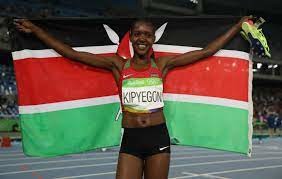
"I knew Sifan was going for a fast race and my goal was to run a fast race here and I thank God that was," Kipyegon said.
The petite Kenyan, who took a full year off in 2018 to have her daughter Alyn, waited until she came out of the final bend to launch her lethal sprint, and she clearly showed the kind of fitness which will be required to defend her Olympic title in Tokyo.
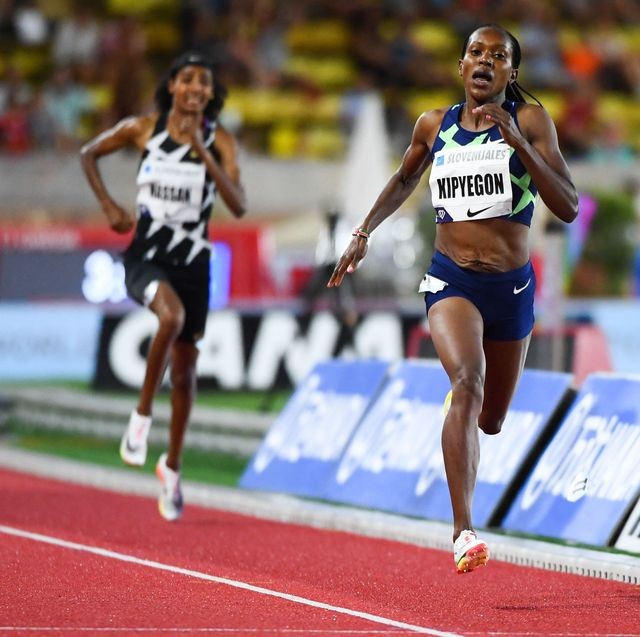
"I am really looking forward to Tokyo and I know it will be a very hard competition but I hope to go there and defend my title," she said. "I have a lot of pressure because the 1500m is a tactical race. Now I will train hard and hope to do my best at the Games."
Hailu, who is only 20 years-old, held on to get third place in a personal best 3:56.28.
There was also fast men's 1500m tonight. Off of the perfect pacing job by American 800m runner Chris Sowinski who hit 400m in 54.2 and 800m in 1:50.8, reigning world champion Timothy Cheruiyot of Kenya had a narrow lead over Australia's Stewy McSweyn and Norway's Jakob Ingebrigtsen. Spain's Mohamed Katir was close behind the leading trio.
With about 200 meters to go, Katir tried to pass Cheruiyot on the outside, but the tall Kenyan quickly responded. In the homestretch, Katir continued to dig, but Cheruiyot would not relent and beat the Spaniard 3:28.28 to 3:28.76. Cheruiyot's time was a 2021 world leader and a personal best, while Katir bested Fermin Cacho's 24 year-old Spanish record of 3:28.95.
"Today's race was good and I won it for the third time," said Cheruiyot who also won here in 2019 and 2020. "I missed competition a lot after spending a lot of time in Kenya where I had a few issues like my hamstring injury and after also losing a relative in my family on the day of the Kenyan trials explaining why I missed out on making the team," Cheruiyot added. "I am therefore happy I am back again after all this."
There were more fast times down the finish order; 11 men broke 3:33. Ingebrigtsen finished third in a season's best 3:29.25, and McSweyn ran an Australian record 3:29.51. McSweyn has also run an Australian record for the mile in Oslo eight days ago.
There were strong 800m races here for both women and men. In the women's contest, Scotswoman Laura Muir got a dramatic victory moving from fourth place to first by sweeping wide in the final 50 meters. She ran a personal best 1:56.73 ahead of her training partner Jemma Reekie (1:56.96 PB), American Kate Grace (1:57.20) and Jamaican Natoya Goule (1:57.35). Goule had led the race into the final 200 meters but tied up in the homestretch.
The men's two-lap race played out similarly when 2012 Olympic silver medalist Nijel Amos muscled past the tiring Marco Arop of Canada --who had led after the pacemaker dropped out-- and Emmanuel Korir of Kenya in the homestretch. Amos finished in a world-leading 1:42.91, while Korir got a season's best 1:43.04 and Arop a personal best 1:43.26. Clayton Murphy, the 2016 Olympic bronze medalist finished seventh in 1:44.41.
"It is always a good feeling coming out here to Monaco, that I am always winning out here, always having a good time," said Amos. "So I try to channel that positivity and bring it to the race. No matter what shape I am in, it always seems to come together."
Login to leave a comment
These Track Photographers Are Giving Back to an Oregon Community Hit Badly by Wildfires
Just weeks after photographing a track meet in the area, they are selling photos to help with recovery.
The night prior to the Big Friendly track meet on July 17, Jake Willard was so excited he couldn’t sleep.
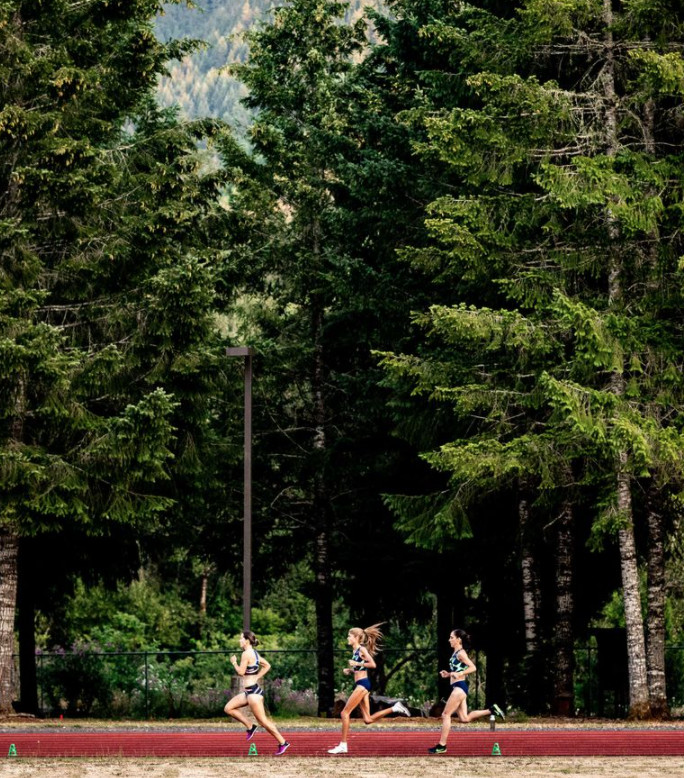
It had been months since the Eugene, Oregon-based photographer covered a race of any kind, due to the COVID-19 outbreak. And he couldn’t wait to shoot the elite-only competition at the McKenzie Community Track, situated among towering pine trees next to the McKenzie River in Vida, Oregon.
On July 17, Willard and fellow photographers Howard Lao and Tim Healy took pictures of some of the world’s best athletes. They watched world bronze medalist Shannon Rowbury run 8:40.26—the fastest performance in the world at that point—to win the women’s 3,000 meters. Olympic silver medalist Nijel Amos ran a world lead in the men’s 600 meters. And three professional training groups competed against each other in a rarely contested mixed-gender relay, among other standout performances.
The meet at the McKenzie Community Track was the second of five competitions in the Big Friendly Series, which were COVID-adjusted events organized by Portland Track this summer. With most tracks closed during the pandemic, Portland Track scrambled to coordinate competitions with different facility organizers. And the McKenzie Community Track board of directors was one of the groups that offered to help.
We thought [hosting the meet] was a really good gesture,” Duane Aanestad, vice president of McKenzie Community Track and Field, told Runner’s World. “We got the track here, there’s nothing going on, go for it.”
Big Friendly organizers required negative tests from everyone in attendance, didn’t allow spectators inside the facility, and asked the competitors—some racing for the first time this year—to socially distance. While documenting these unprecedented moments, Willard felt at peace for the first time in months.
“It felt like a good day, and the athletes had fun with it,” Willard told Runner’s World. “There was a noticeable camaraderie for everyone in attendance, a lot of smiles, a lot of laughing, a lot of elbow bumps instead of high-fives. It was cool to see everyone there enjoy that for a moment, life was normal. Track was the center of our universe.”
But weeks after the Big Friendly meets, the same community that welcomed local track athletes needed major assistance. In early September, the region was nearly decimated by the Holiday Farm Fire, a 173,000-acre blaze that burned more than 430 homes and infrastructure in the McKenzie River Valley. As reported by The Oregonian, the photographers and Portland Track organizers responded to the crisis by giving back to the community that opened its doors to them.
“[McKenzie board of directors] were such a great, welcoming community when we were trying to figure this out,” Michael Bergmann, president of Portland Track, told Runner’s World. “We were literally flying by the seat of our pants, and so we just wanted to return that favor as part of the track and field community in bringing that care for a community that’s in pain.”
As Lao monitored the fire from his home in Portland, he emailed Willard and Healy on September 12, suggesting they sell prints of their photographs from the competition and donate the proceeds. In coordination with Portland Track, the photographers each donated three photos for an Etsy shop, where funds from every photo sold goes to the McKenzie Community Recovery Fund. As of November 10, the Portland Track Store has made 12 sales.
“It was a really big team effort from everybody,” Lao told Runner’s World. “We’re just trying to get some relief down to the people there. The track was used for a track meet in the summer and then it was used for a safe meeting place during the fire. It’s more than just a track.”
Retired track coach Jeff Sherman is one of the local contacts that helped coordinate the Big Friendly. When the fire hit the McKenzie community, Sherman and his family were able to evacuate to eastern Oregon. But many were unable to leave because debris blown over by the blaze blocked the roadways. Residents took refuge in the track infield, where a fire crew worked tirelessly to protect them from the flames.
“[The fire] burned right up to the fencing on the track and a metal building with hurdles stored inside, it scorched the back of that,” Sherman said. “From what I understand, people were there for about four or five hours.” He said rescue crews ultimately led residents to safety with road-clearing equipment around 5 a.m. local time.
Weeks later, the McKenzie community is working to rebuild after the fire’s mass destruction. But the gesture from Portland Track and the photographers is providing a bright spot in a time of need.
“[Portland Track] were reaching out from the get-go to ask if we needed help,” Aanestad said. “It seemed like we were part of a family, and you take care of family.”
by Runner’s World
Login to leave a comment
Long hours, short nights and ulcers: Portland Track defies the coronavirus to stage elite meets
If Portland Track’s Jeff Merrill feels a little ragged, well, no wonder.
The legwork it takes to stage elite track meets during the coronavirus pandemic would be a strain on anybody.
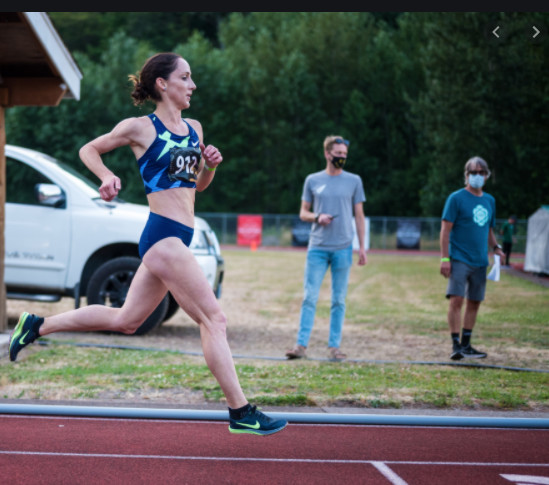
“It’s an around-the-clock type of thing,” Merrill says. “The days all kind of blur together.”
Portland Track has put on two popup meets, the Big Friendly 1 on July 3 at Portland’s Jesuit High School and the Big Friendly 2 (the Bigger Friendly) on July 17 at McKenzie Track, 40 miles outside of Eugene.
Big Friendly 3 is being planned for Friday at an undisclosed location somewhere in the Portland area. Organizers are staying mum about the location to discourage spectators and prevent potential spread of the virus.
The effort it’s taken to get to this point would exhaust a marathoner. Portland Track has consulted with Oregon’s three, Nike-sponsored elite distance groups — the Bowerman Track Club, Oregon Track Club Elite and coach Pete Julian’s unnamed group.
The Portland Thorns of the National Women’s Soccer League have advised. The office of Oregon Gov. Kate Brown has signed off. So have Multnomah and Lane counties, and, presumably, the county in which the next one will take place if it’s not Multnomah. So has USA Track & Field.
Portland Track organizers have arranged with Providence-Oregon for participants to be tested twice in a 48-hour period shortly before race day. They have had to find available tracks suitable for Olympic-level athletes that meet USATF’s sanctioning criteria.
In the case of McKenzie Track, that meant building an inside rail the day before the meet, even while on the phone to Lane County Health and Human Services.
“We weren’t sure the meet was going to happen because a new mask order was going into effect and we wanted to find out for sure that we were OK to hold it,” Merrill says.
They were — once they had passed the hat to participants to pay for the rail. Portland Track is a shoestring operation with an all-volunteer board and next-to-no budget. Merrill, who is a Portland Track board member and works fulltime for Nike, hasn’t slept much this month.
None of this is easy. All of it is time consuming. Start with finding a track.
“It’s pretty hard,” says Portland Track president Michael Bergmann. “I’ve learned about all the tracks in the state, from Lane Community College, to George Fox, to Linfield, to Mt. Hood Community College. All of those guys have rails. But the schools are closed. The campuses are closed. Most of those places don’t want to take the risk of having any sort of event, which I totally understand and respect.”
McKenzie Community Track & Field didn’t have those concerns, which made the track available on July 17 — providing Portland Track brought the rail.
But that track’s tight turns make it less suitable for running fast and setting records, which is what athletes such as Donavan Brazier, Craig Engels, Konstanze Klosterhalfen, Raevyn Rogers and Shannon Rowbury of Team Julian, Nijel Amos and Chanelle Price of OTC Elite, and Josh Kerr of the Brooks Beasts want to do.
“A good call out is, when you’re looking at an aerial view on Google Maps, you want a track with a soccer field in the middle because those are wider,” Merrill says. “If they just have a football field in the middle, they’re a little narrow.”
The Thorns became involved because some players are fans of Tracklandia, a talk show Portland Track streams and Merrill co-hosts with two-time Olympian Andrew Wheating.
Thorns defender Emily Menges, who ran track at Georgetown, has been known to join the pre-pandemic post-show gatherings at an adjacent restaurant. When Merrill mentioned Portland Track was trying to set up a coronavirus testing protocol, Menges put the organizers in touch with the Thorns training staff. That led Portland Track to Providence for the testing.
“Their system is awesome,” Bergmann says.
On race day, Portland Track is serious about keeping out spectators and holding down the number of people around the track.
At McKenzie Track, “we had folks from their board at the front of the road access with a checklist,” Bergmann says. “Nobody got past who wasn’t on the list. When people come into the facility, we do a temperature check and give them a wristband to show they’ve been checked.”
Athletes are asked to wear masks when not competing. Portland Track board members do everything from labeling and handing out race bibs to counting laps to handling the public address announcing.
They had hoped to livestream the McKenzie meet, but rural Lane County couldn’t provide the necessary bandwidth. That shouldn’t be a problem Friday.
J.J. Vazquez, a Portland State professor who runs the production company Locomotion Pictures, is set to be in charge of streaming the action live on Portland Track’s free
There should be plenty to watch. Team Julian, OTC Elite, the Brooks Beasts of Seattle and Little Wing of Bend will compete. Seattle-based post-collegians mentored by University of Washington coaches Andy and Maurica Powell also figure to be there.
Bergmann has hinted there could be surprises — either entries or record attempts — but declines to be more specific.
The Bowerman Track Club has opted out, choosing instead to hold intrasquad time trials.
Bergmann says BTC coach Jerry Schumacher “knows what we’re doing. But they’ve been pretty successful doing it their way. He has his plan. I’m not going to beg him.”
The people at Portland Track have enough on their plate as it is. They aren’t getting rich.
On their own time, they are providing the region’s Olympic-level athletes a chance to do what they train to do.
“We’re having a blast,” Merrill says. “Although, I might have an ulcer.”
by Oregon Live
Login to leave a comment
OTC Elite runners hoping for late-summer meets
The coronavirus pandemic has postponed the Tokyo Olympics for a year and put the 2020 track and field season on hold indefinitely.
That doesn’t necessarily mean the work has stopped for the athletes.
Several members of the Eugene-based Oregon Track Club Elite professional training group have continued to train, albeit with a modified schedule.
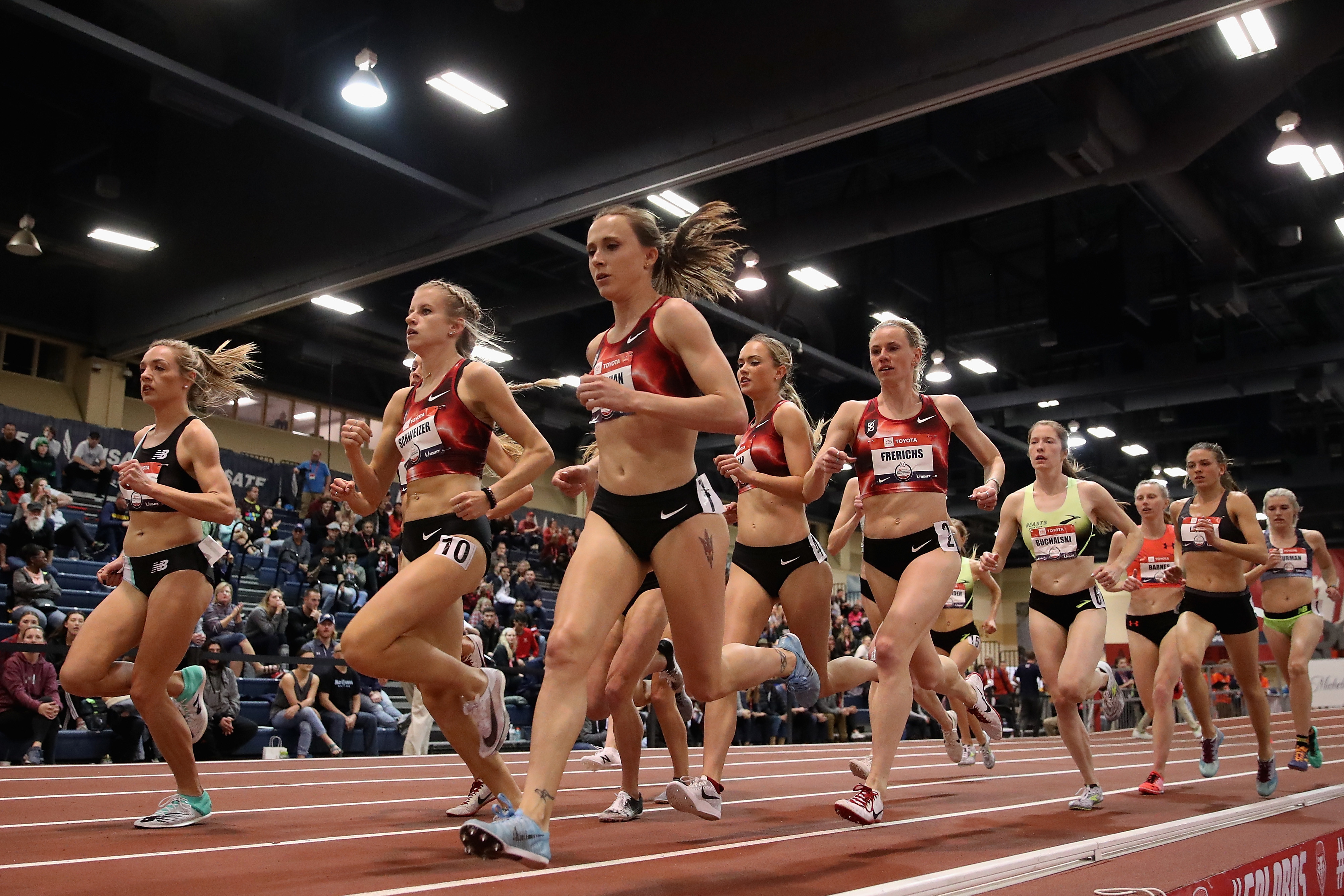
Gyms are closed, as are several local tracks, but the trails are still open, and OTC Elite’s team of middle distance and distance runners are taking advantage.
“Not much has changed for me fortunately,” said Ben Blankenship, a 2016 Olympian in the 1,500 meters. “It’s just going out there alone and being self-disciplined.”
Blankenship has been plotting his return to the Summer Games since his eighth-place finish four years ago in Rio de Janeiro.That didn’t change on Tuesday when the International Olympic Committee and the Japanese government agreed to move the Olympics to 2021.
“I was really ready to do something,” Blankenship said. “We were looking at some of those early (spring) Stanford meets to get ready. But now it’s kind of catch your breath and restart. It could almost be looked at as a bonus year, right? So what can you do this year as kind of a bonus?”
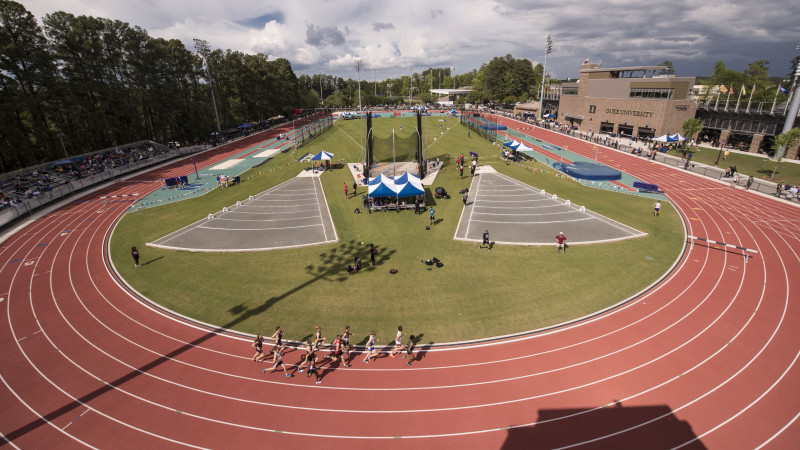
Blankenship wasn’t the only runner on OTC Elite gearing up for a spot on the starting line at the Summer Games. Among its 15 members, there are six Olympians, including marathoner Sally Kipyego, who had already qualified for Tokyo with her third-place finish at the women’s U.S. Olympic Marathon Trials last month in Atlanta.
USA Track & Field has not yet announced whether Kipyego, as well as former Oregon star and men’s marathon winner Galen Rupp, will be able to keep those qualifiers for the 2021 Games or if the marathon qualifier will have to be raced again. The top three finishers in both races in Atlanta qualified for Tokyo.
Also for OTC Elite, Francine Niyonsaba was the 2016 silver medalist in the women’s 800 for Burundi, Hassan Mead (U.S.) and Tom Farrell (Great Britain) were in the men’s 5,000 that year, and Nijel Amos won silver in the men’s 800 for Botswana in 2012 when he was just 18 years old.
Amos had his best season on the track last year since his success in London. He ran under 1:45 in all but one race, and twice broke 1:43, including his season-best of 1:41.89.
Amos wasn’t the only one who excelled in 2019.
Hanna Green is coming off a breakout season as she made her first World Outdoor Championship team for the United States in the women’s 800 after running 1:58.19 for a second-place finish at the U.S. Outdoor Championships.
That success fueled high expectations coming into the 2020 Olympic season.
“Definitely disappointed because I felt like I had a pretty good start and was kind of rolling into another good season,” she said. “You just have to think positive right now because you don’t know what’s going to happen so you don’t want to get into a negative thought process where you’re just worrying. You have to go with the flow.”
Like Blankenship, Green is taking advantage of the trails to get her work in and try and maintain some fitness.
“We’ve definitely stepped back in our training, just to be safe and so our immune systems aren’t being damaged by hard workouts,” Green said. “Once we know if or when there are going to be races we’ll start to build up again.”
The sooner the better, both Blankenship and Green said.
World Athletics said earlier this week it was still hoping to host several one-day meets later in the summer.
“If they could get in those later Diamond League meets that would be awesome, or any meet in general,” Green said. “You just have to stay ready for whatever’s next whenever that may be.”
Login to leave a comment


